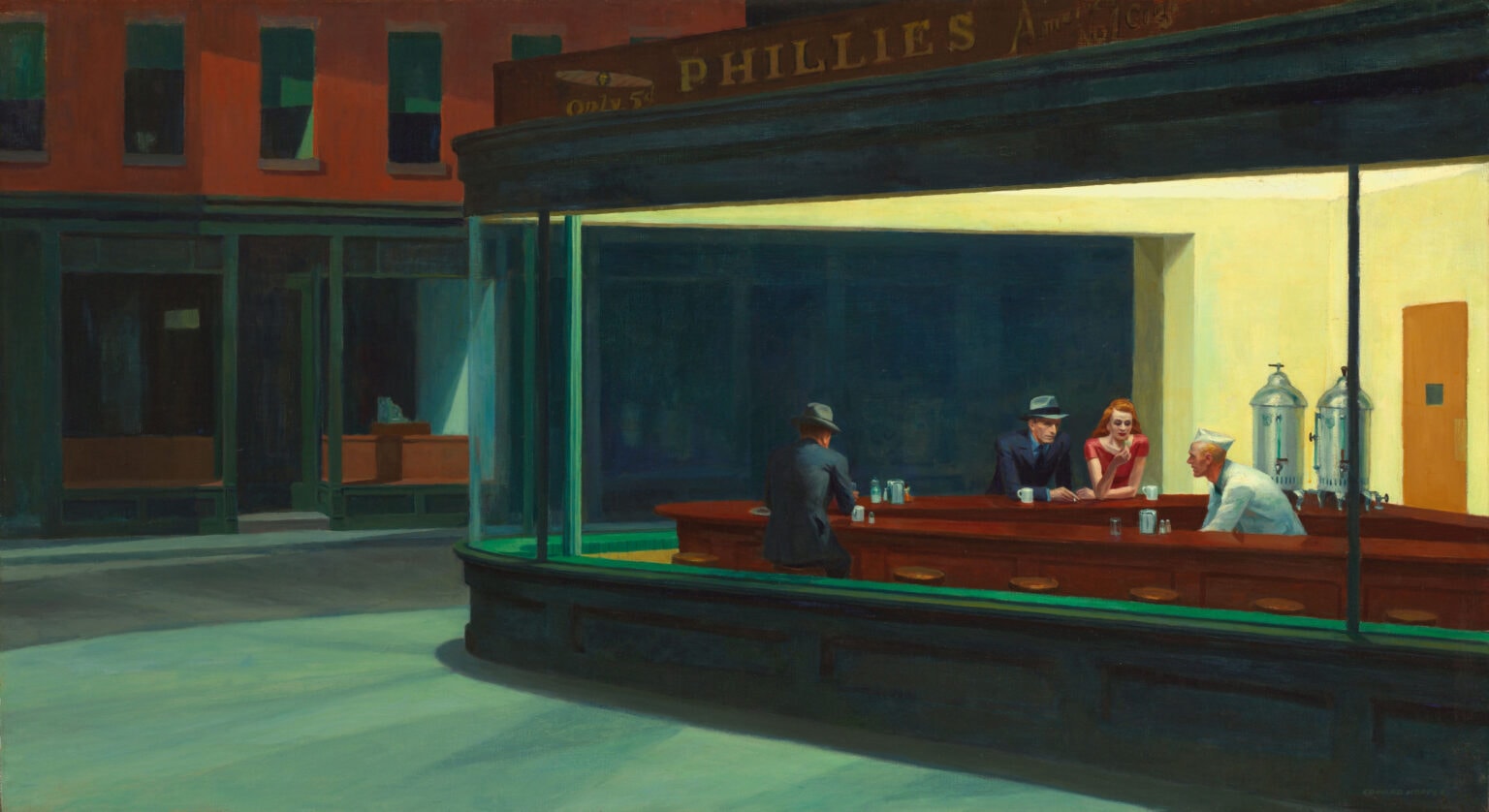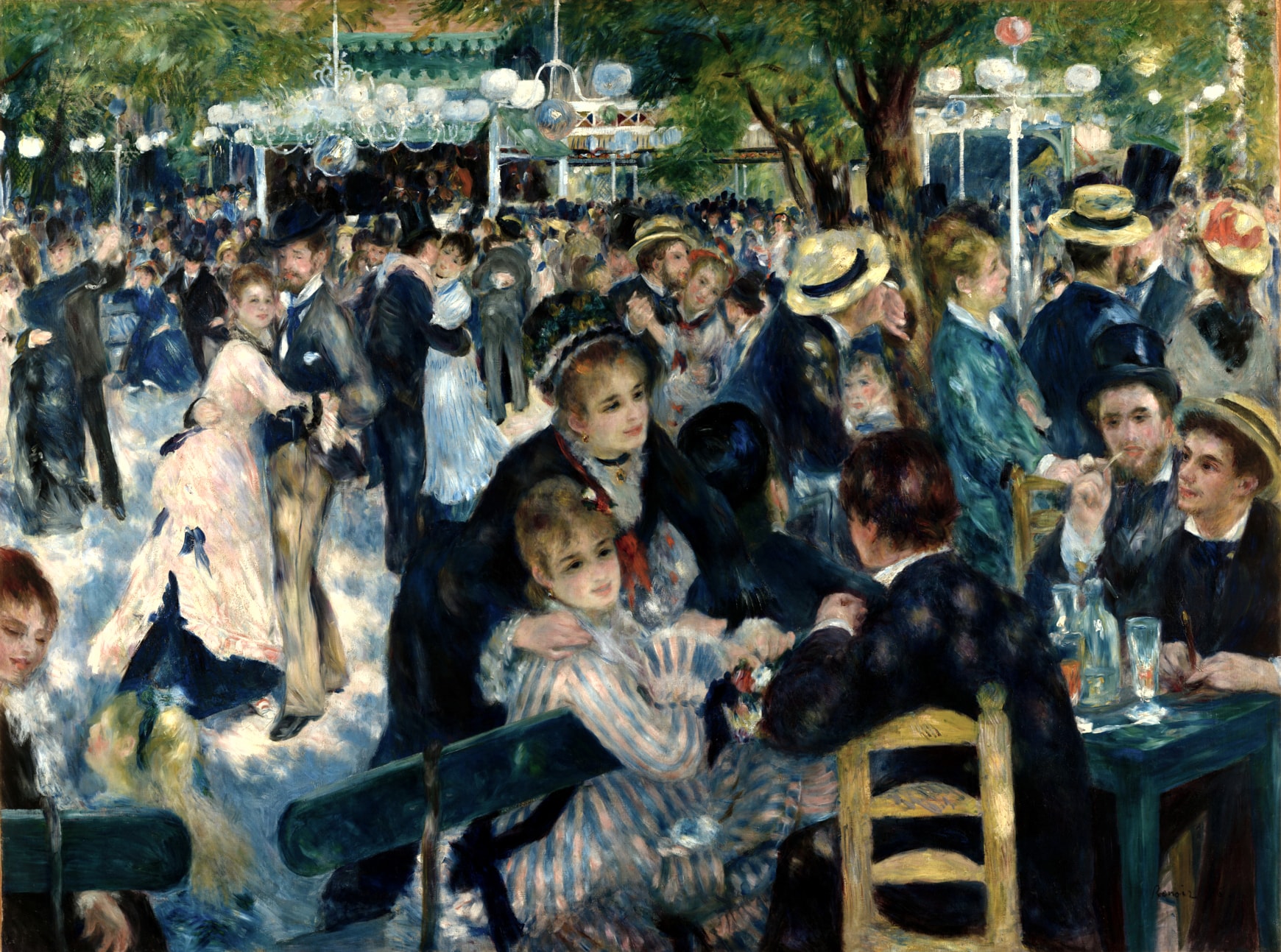Oil paintings have been serving as the foundation of artistic expression for centuries, shaping the way we perceive art and its cultural significance. These famous oil paintings represent timeless contributions to aesthetics, storytelling, and history.
Their enduring appeal lies in their intricate techniques, historical relevance, and the profound emotional impact they have had on cultures worldwide.

What Are Famous Oil Paintings?
Oil paintings are artworks created using pigments blended with drying oils, such as walnut or linseed oil that lets artists make a unique and rich texture, along with vibrant colours at the canvas or oak panels. These features make oil painting one of the most enduring art forms.
Why Are Some Oil Paintings Considered “Famous”?
Certain famous oil paintings gain recognition for their artistic innovation, historical significance, or the emotional resonance they evoke. From Leonardo da Vinci’s Mona Lisa to Vincent van Gogh’s Starry Night, these iconic artworks often define art history, influence art movements, and transcend their eras to become part of pop culture.
Key Features of Oil Paintings
- Vivid Colour and Depth: Techniques like sfumato and chiaroscuro in famous oil painting portraits create lifelike imagery. For example, Jan van Eyck’s Arnolfini Portrait is a masterpiece from the Dutch Golden Age.
- Textural Detail: Artists often layered paint to achieve rich textures, seen in Rembrandt van Rijn’s Night Watch, which reflects themes of unity and pride.
- Longevity: The durability of oil allows famous works to endure for centuries, such as those in the Louvre Museum or the Paul Getty Museum.
- Symbolism: Many popular oil paintings has a specific symbolic meaning, like Klimt’s use of gold leaf in The Kiss which represents love and intimacy.
Renowned Artists and Their Contributions
Oil paintings have influenced and changed the meaning art history, revolutionising artistic expression during the Renaissance and beyond. Artists like Leonardo da Vinci (noted for his work in the Leonardo da Vinci year of 1503) and Van Gogh (active during the Vincent van Gogh year of 1889) utilised this medium to explore realism, perspective, and emotion.
These works have become immensely popular and are housed in renowned institutions like the Art Institute and the Museo del Prado.
The following are some of the most famous oil paintings made by famous artists:
1. Mona Lisa by Leonardo da Vinci
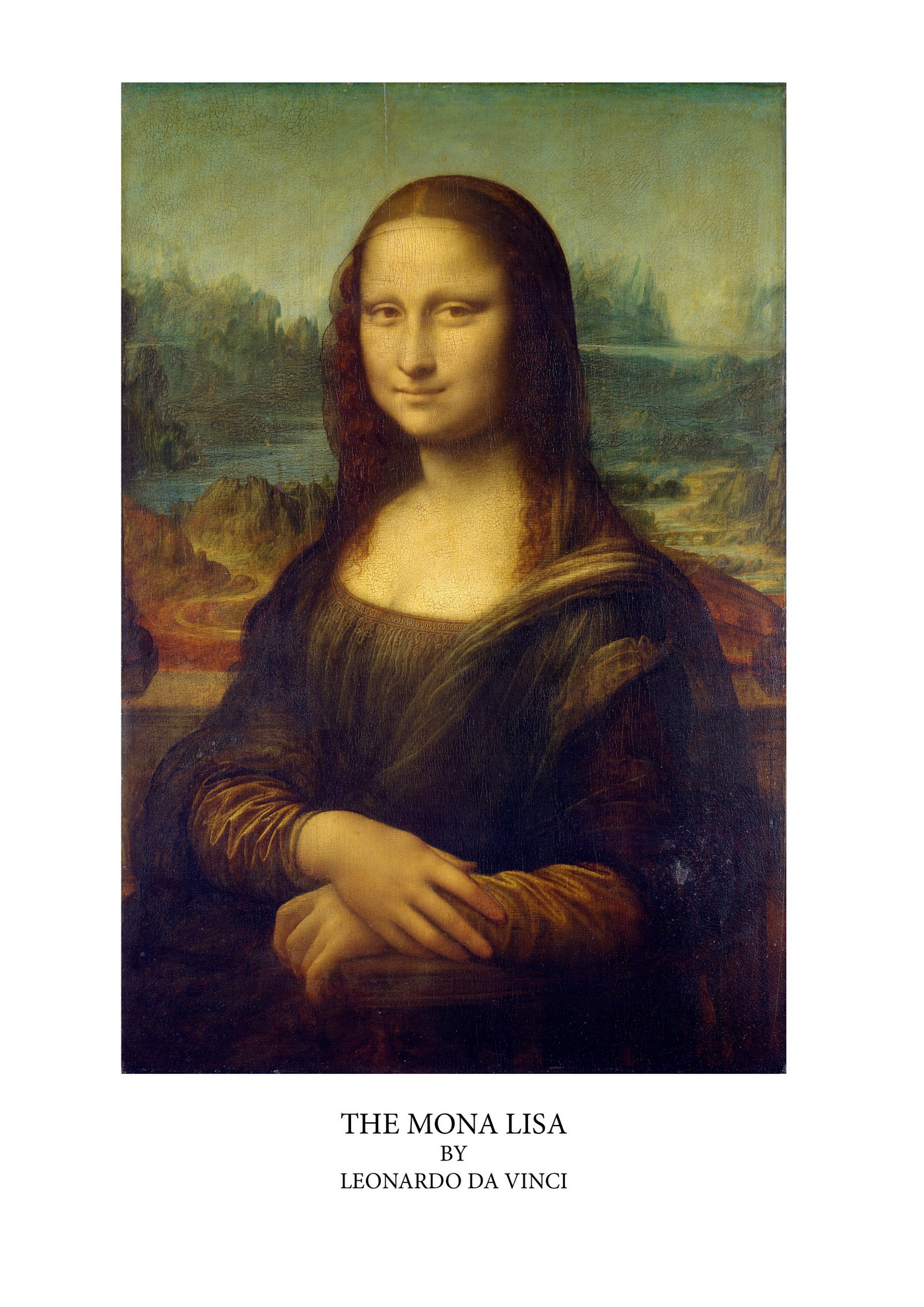
- Artist: Leonardo da Vinci
- Era: Renaissance (1503–1506)
- Cultural Context: Created during the High Renaissance, a period marked by a flourishing of art and humanism in Europe.
- Theme: The enigmatic expression of the sitter, often interpreted as a symbol of idealised beauty and mystery.
- Key Figures and Setting: Represents Lisa Gherardini, set against a softly lit, atmospheric background.
- Techniques: Sfumato (a soft blending of colours), creating a very lifelike, three-dimensional effect.
- Symbolism: The painting’s smile and gaze shows some kind of mystery and intrigue.
- Significance: The Mona Lisa is known and celebrated as an epitome of Renaissance art and humanistic ideals. Its widespread fame is bolstered by its mysterious theft in 1911.
2. The Last Supper by Leonardo da Vinci
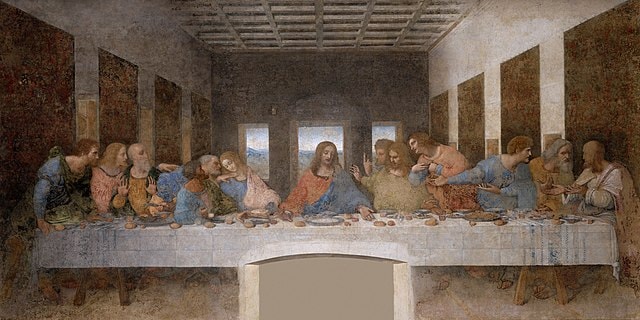
- Artist: Leonardo da Vinci
- Era: Renaissance (1495–1498)
- Cultural Context: Commissioned as a fresco for the refectory of the Convent of Santa Maria delle Grazie in Milan.
- Theme: Jesus' final meal with his disciples, capturing the moment he announces his betrayal.
- Key Figures: Christ at the centre, surrounded by his 12 apostles with various poses.
- Techniques: Experimental layering of tempera and oil on plaster, though it led to deterioration.
- Symbolism: This shows the religious themes of divinity and human reaction.
- Significance: This work redefined narrative art, influencing centuries of Christian iconography.
3. The Birth of Venus by Sandro Botticelli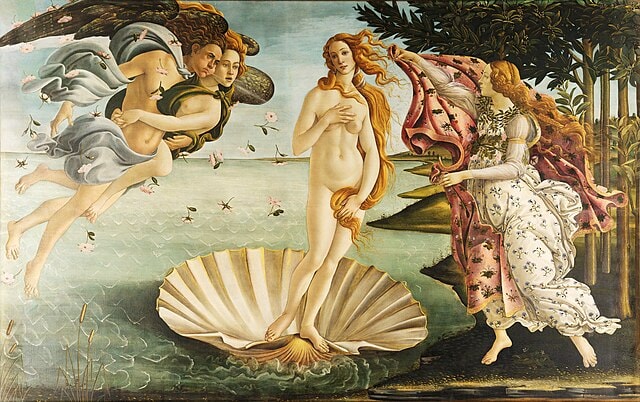
- Artist: Sandro Botticelli
- Era: Early Renaissance (1485–1486)
- Cultural Context: Reflects the resurgence of classical mythology during the Renaissance.
- Theme: Venus’s birth and emergence from the sea, symbolising beauty and love.
- Key Figures: Venus, Zephyrus (the west wind), and a Hora of Spring with flowing robes.
- Techniques: Linear style with delicate, flowing lines and ethereal colours.
- Symbolism: Venus symbolises earthly and divine love.
- Significance: One of the earliest mythological subjects in Renaissance art, celebrated for its poetic beauty.
4. The Arnolfini Portrait by Jan Van Eyck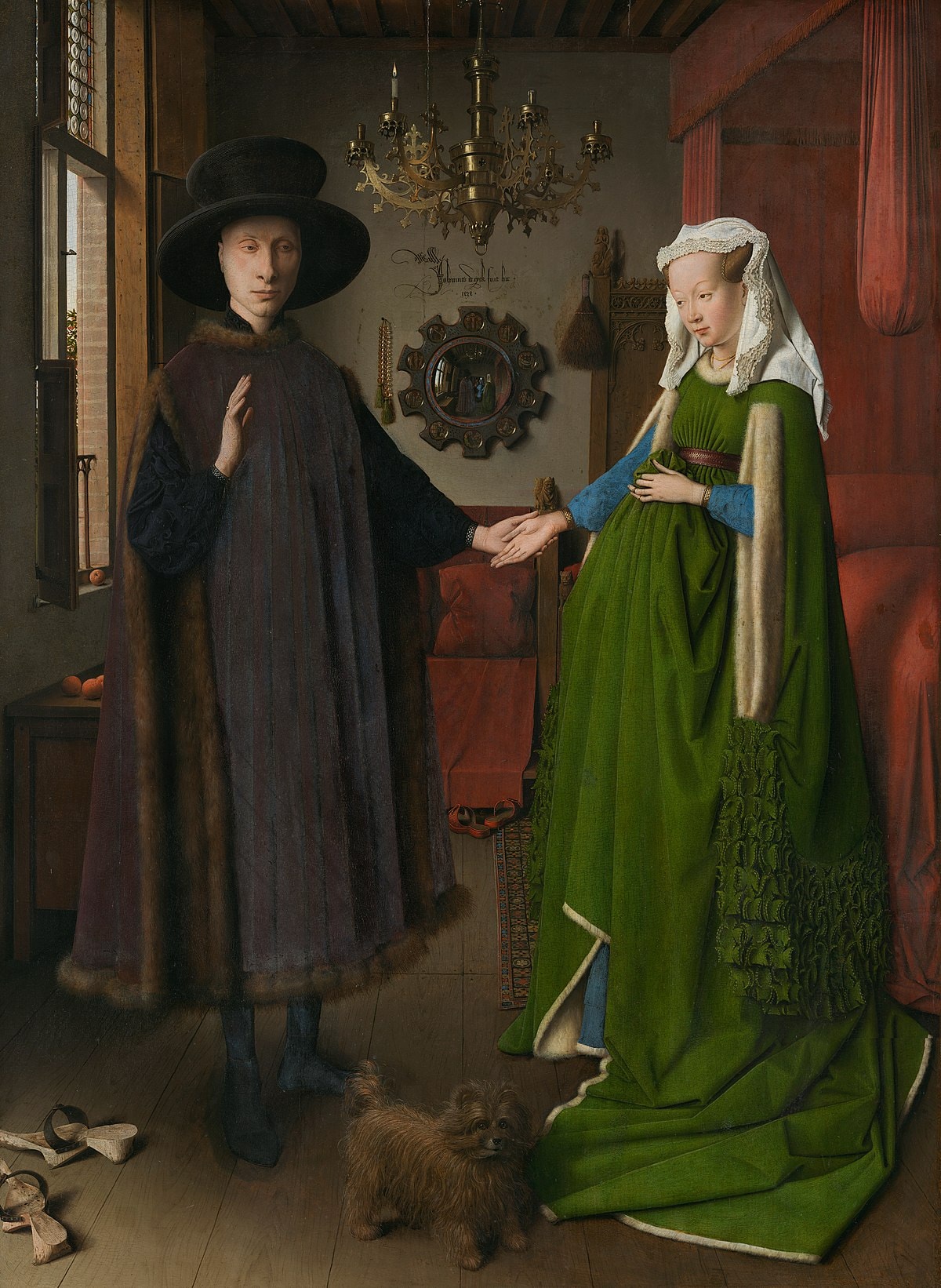
- Artist: Jan Van Eyck
- Era: Northern Renaissance (1434)
- Cultural Context: A testament to the realism and detail of early Netherlandish art.
- Theme: The painting is all about marriage, its wealth, and living their domestic life.
- Key Figures: A married couple living in a domestic setting.
- Techniques: The meticulous use of oil paint to capture intricate textures and lighting.
- Symbolism: The mirror, dog, and fruit suggest fidelity, wealth, and fertility of their marriage.
- Significance: Renowned for its realism and attention to detail, marking a leap in portrait art.
5. The Wedding Feast at Cana by Paolo Veronese
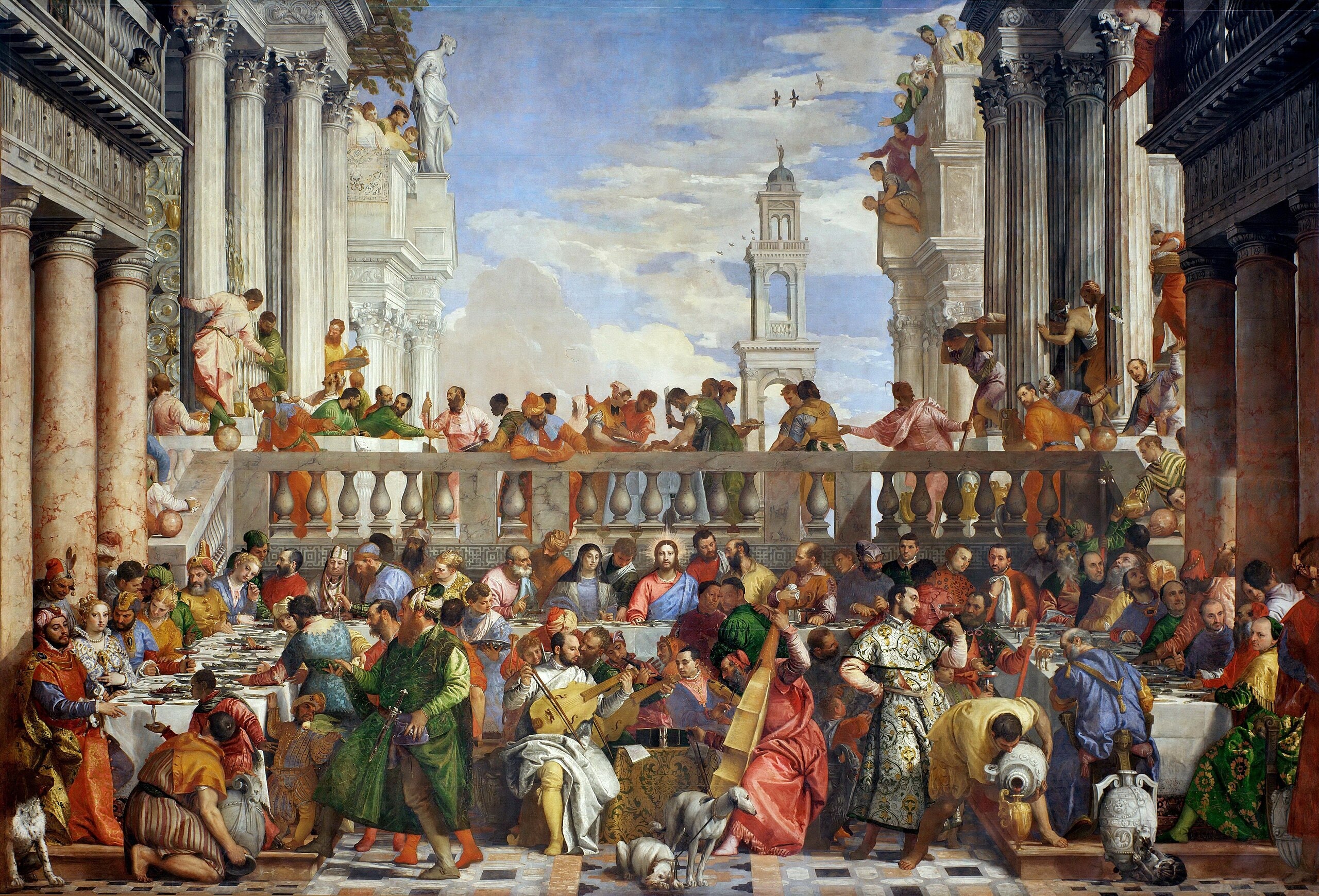
- Artist: Paolo Veronese
- Era: Late Renaissance (1563)
- Cultural Context: Made for a Venetian monastery, reflecting the grand religious celebrations during the Renaissance.
- Theme: This shows the biblical scene of Jesus turning water into wine at a wedding banquet.
- Key Figures: Christ, Mary, and various guests, including musicians and servants.
- Techniques: Luminous colour palette and dynamic composition with intricate details.
- Symbolism: Represents divine intervention and abundance.
- Significance: Celebrated for its massive scale and intricate portrayal of human activity.
6. The Milkmaid by Johannes Vermeer
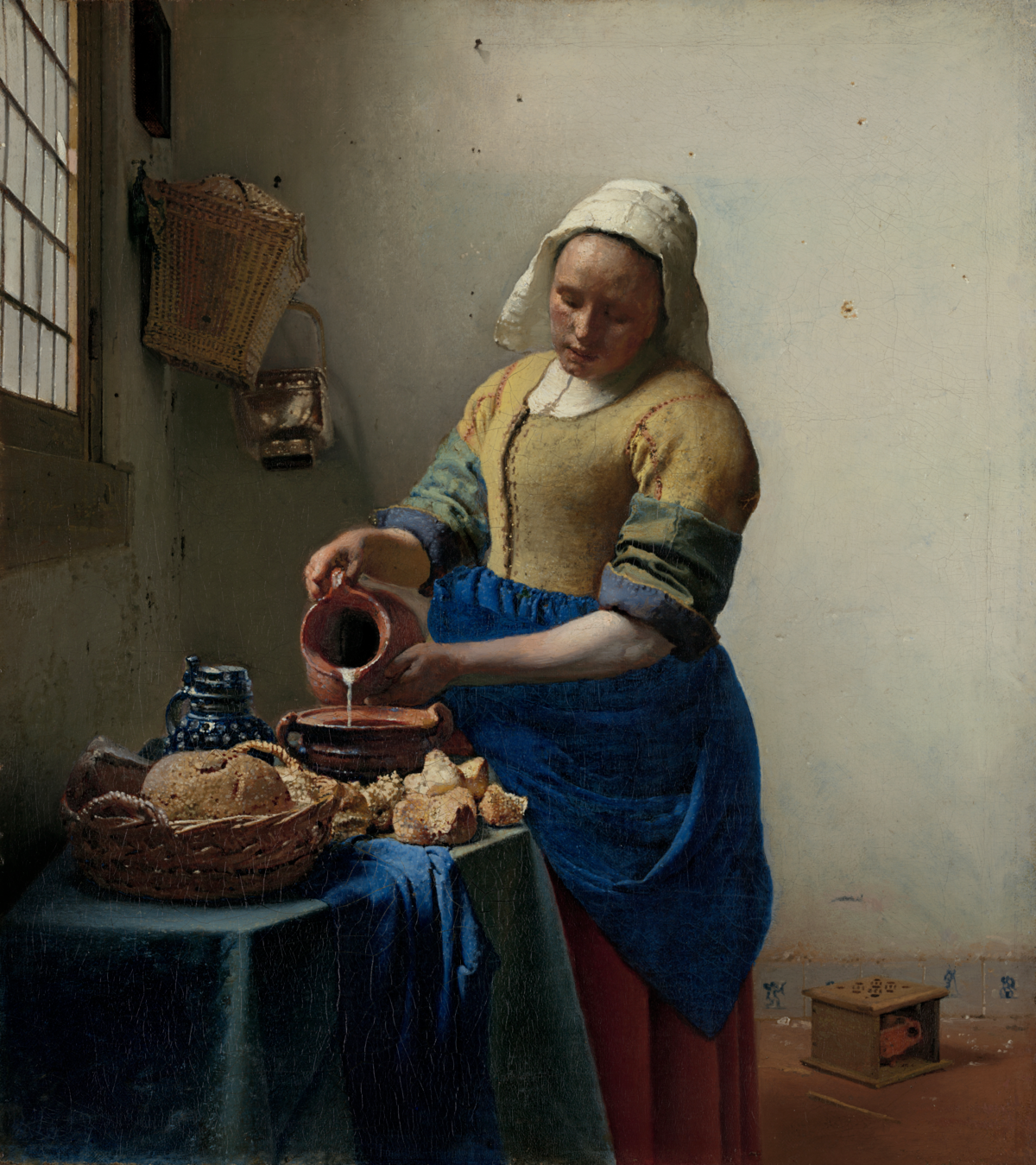
- Artist: Johannes Vermeer
- Era: Dutch Golden Age (1657–1658)
- Cultural Context: This painting focuses on domestic scenarios and events along with the dignity of life.
- Theme: A maidservant pouring milk, symbolising simplicity and hard work.
- Key Figures: A single figure in a domestic setting, surrounded by kitchen items.
- Techniques: Masterful use of light and texture to create a serene atmosphere.
- Symbolism: Represents purity and the value of labour.
- Significance: An icon of Dutch realism, showcasing Vermeer’s skill in rendering ordinary life.
7. Lady with an Ermine by Leonardo da Vinci
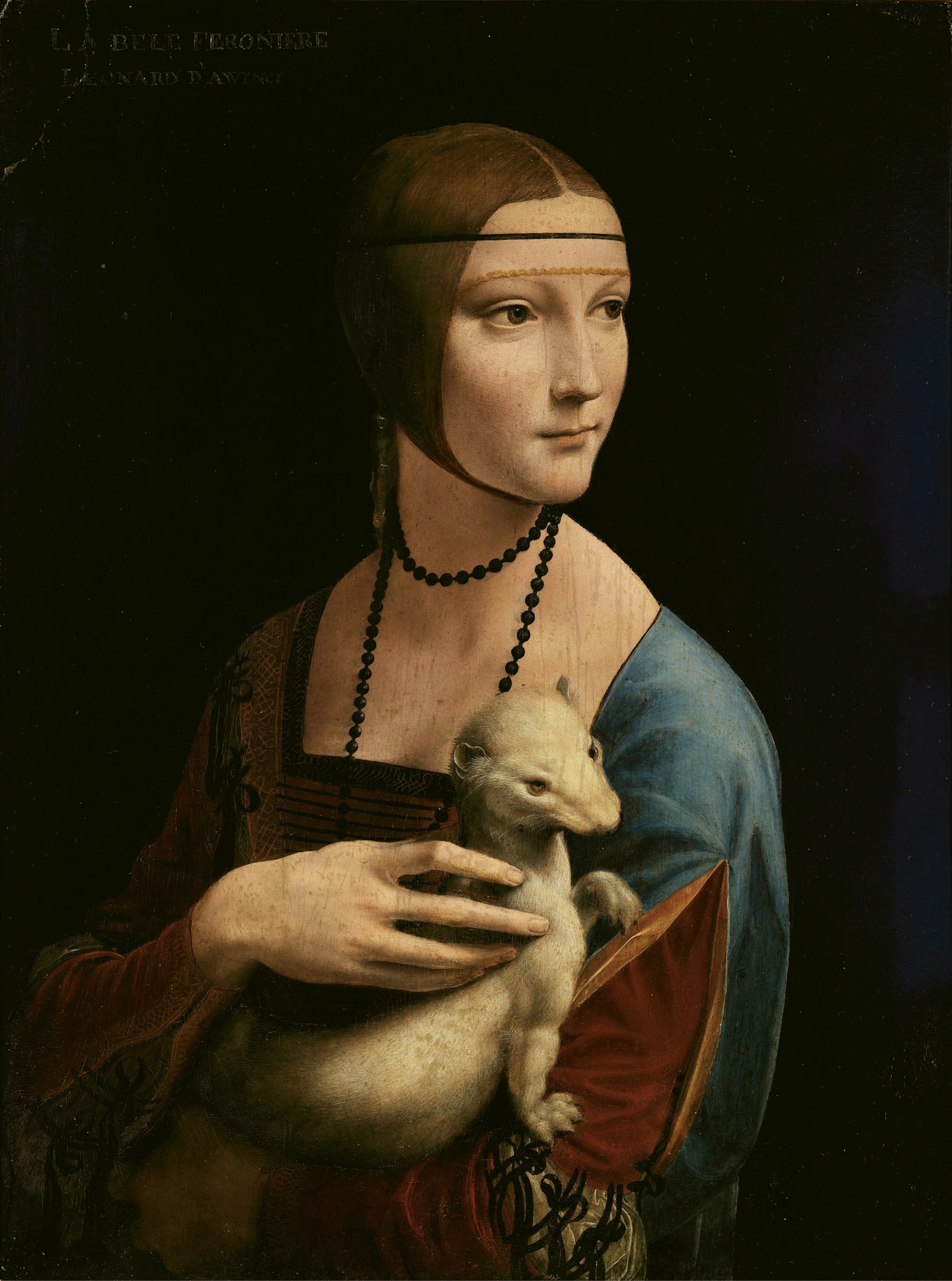
- Artist: Leonardo da Vinci
- Era: Renaissance (1489–1490)
- Cultural Context: A commissioned portrait of Cecilia Gallerani, a noblewoman.
- Theme: Highlights the sitter’s grace and intellect, symbolised by the ermine.
- Key Figures: Cecilia Gallerani is holding an ermine.
- Techniques: Sfumato technique to soften transitions and enhance realism.
- Symbolism: The ermine represents purity and virtue.
- Significance: A masterpiece of Renaissance portraiture, blending symbolism with lifelike representation.
8. The Night Watch by Rembrandt Van Rijn
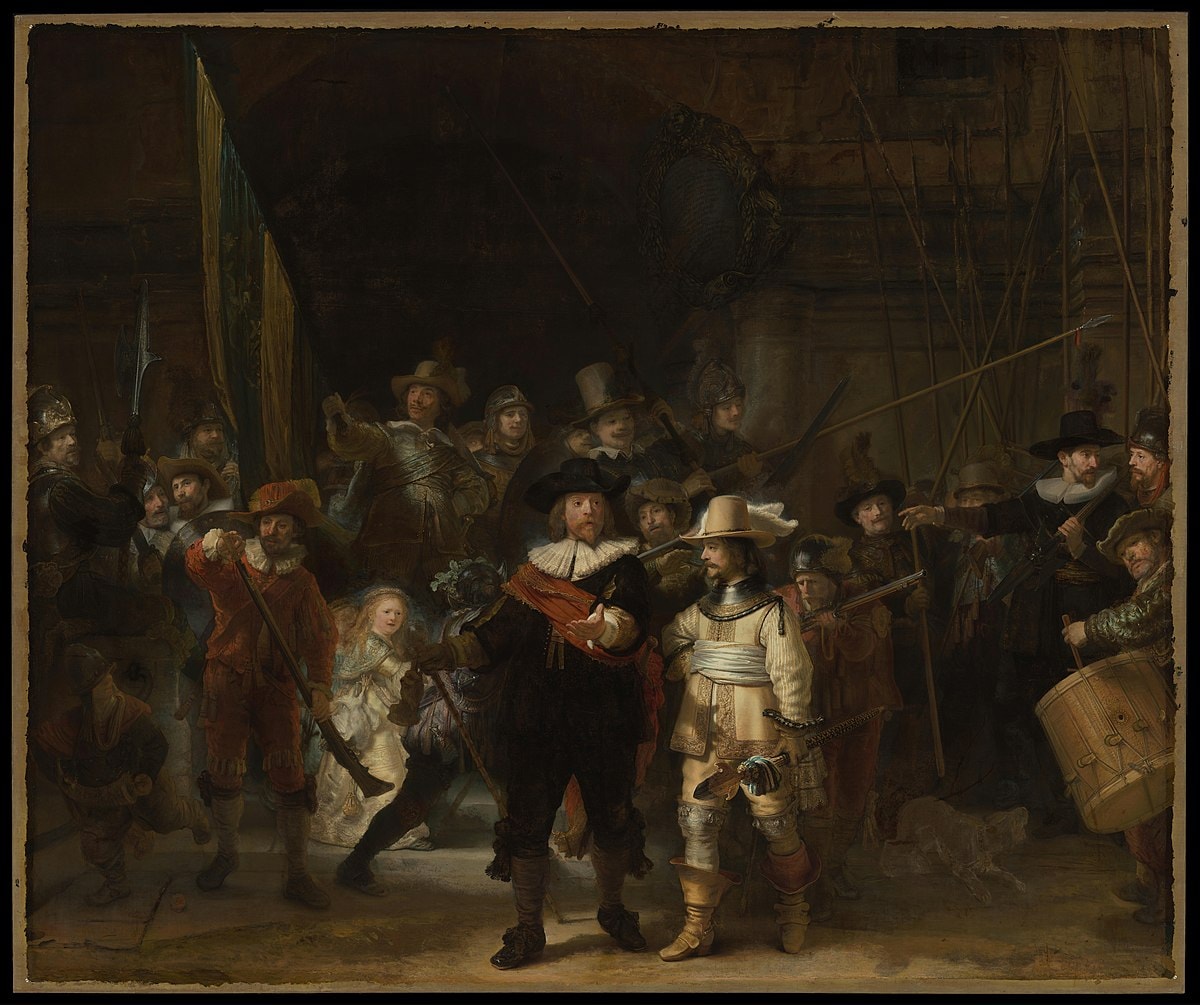
- Artist: Rembrandt Van Rijn
- Era: Dutch Golden Age (1642)
- Cultural Context: Commissioned as a group portrait of a militia company.
- Theme: Depicts a military company preparing for action, filled with movement and drama.
- Key Figures: Captain Frans Banning Cocq and his lieutenant, surrounded by other members.
- Techniques: Dramatic use of light and shadow (chiaroscuro) to enhance depth.
- Symbolism: The lively composition symbolises civic pride and unity.
- Significance: A revolutionary approach to group portraiture, showcasing Rembrandt’s mastery.
9. The Storm on the Sea of Galilee by Rembrandt Van Rijn
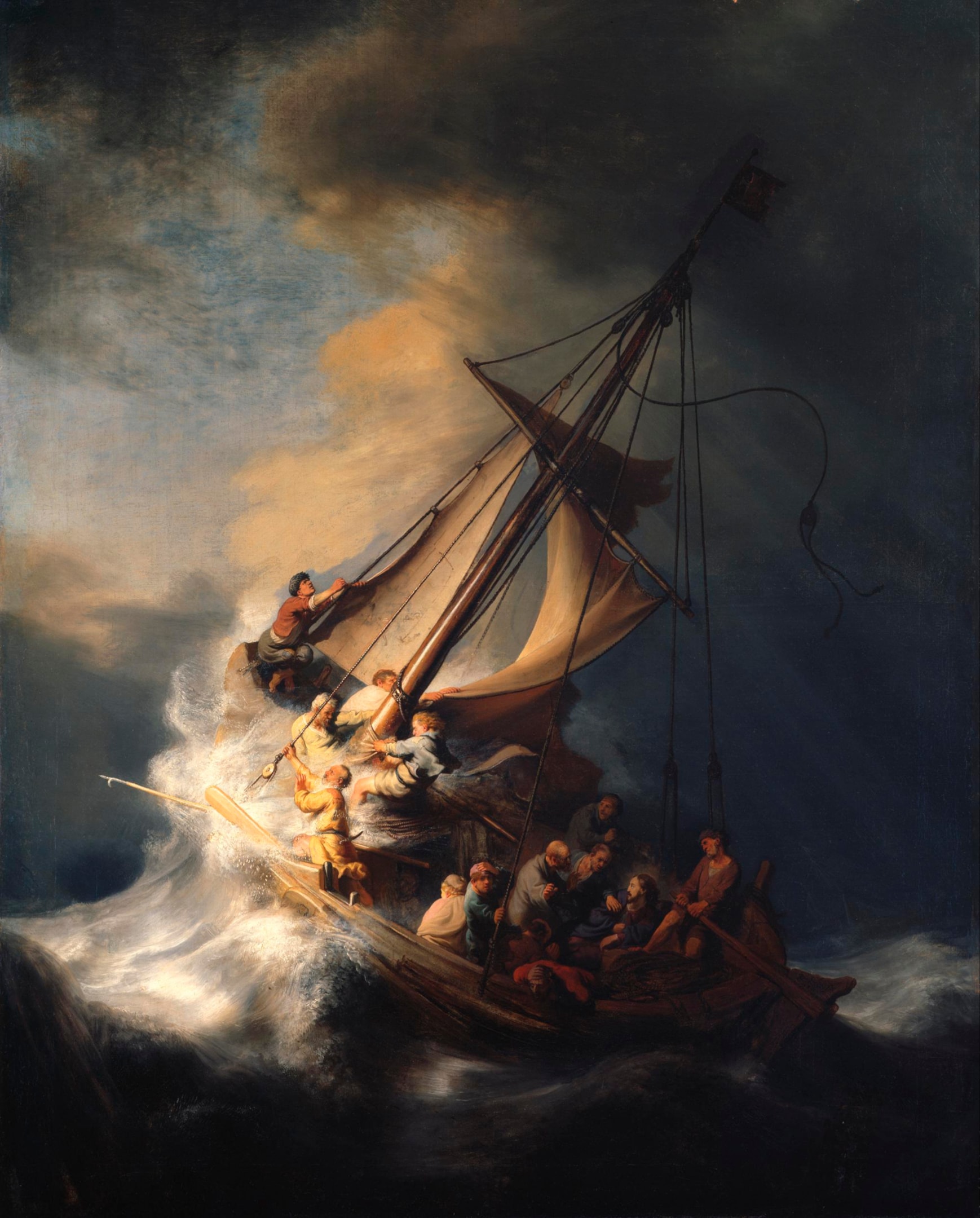
- Artist: Rembrandt Van Rijn
- Era: Dutch Golden Age (1633)
- Cultural Context: This painting shows the artists way of using biblical themes in a dramatic intensity.
- Theme: Jesus calming the storm, a metaphor for faith amidst adversity.
- Key Figures: Christ and his disciples in a turbulent sea.
- Techniques: Vivid contrasts between light and dark to heighten drama.
- Symbolism: The art represents Christ's divine power and human vulnerability.
- Significance: Rembrandt’s only known seascape captures intense emotional and physical struggle.
10. Las Meninas by Diego Velázquez
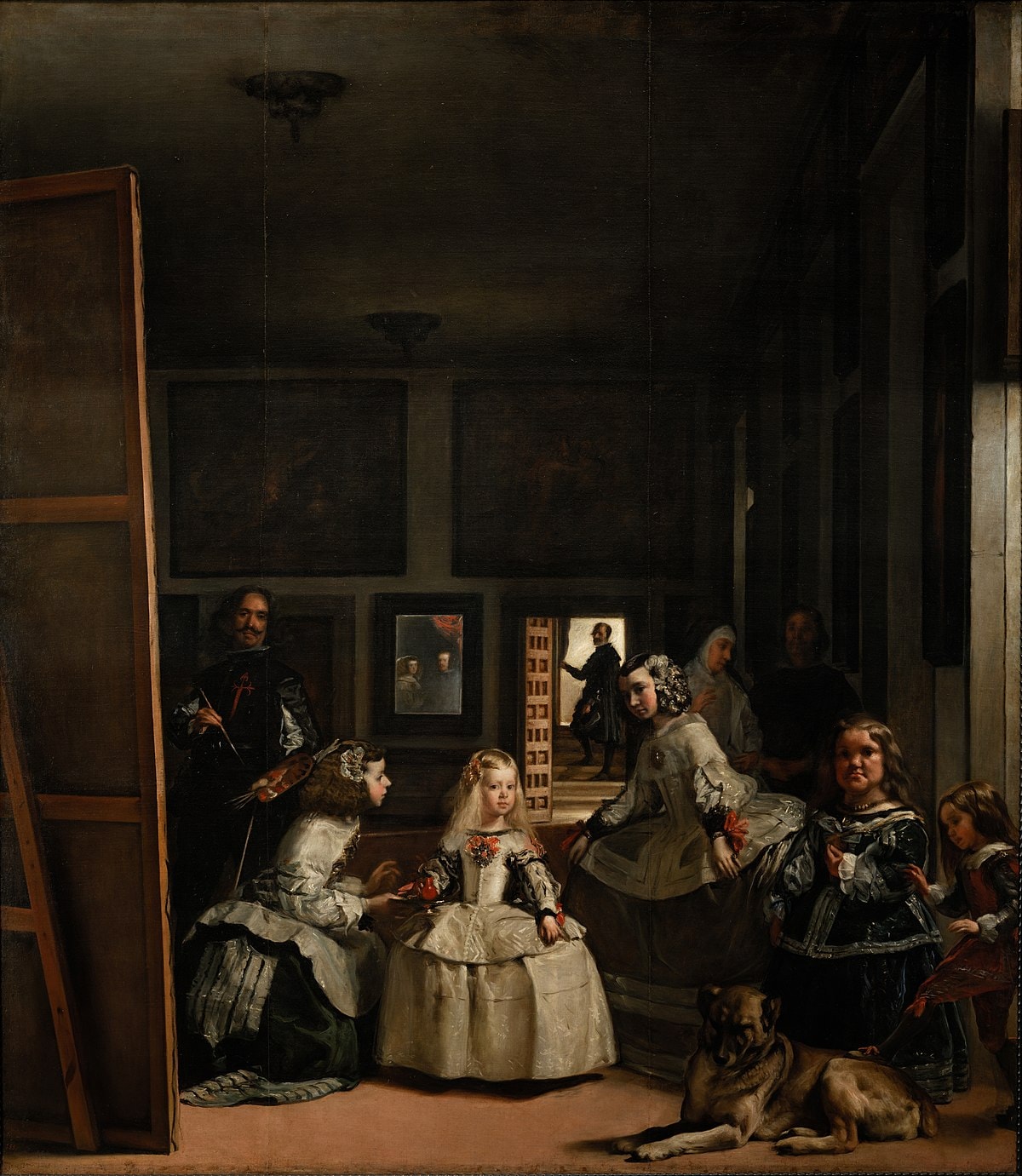
- Artist: Diego Velázquez
- Era: Spanish Golden Age (1656)
- Cultural Context: Created for the Spanish royal court, reflecting courtly life.
- Theme: A complex scene blending portraiture and self-referential art.
- Key Figures: Infanta Margarita, her maids of honour, Velázquez himself, and others.
- Techniques: Masterful manipulation of perspective and light.
- Symbolism: Highlights the relationship between art, viewer, and subject.
- Significance: A landmark in Western art, known for its enigmatic composition and depth.
11. The Birth of the Virgin by Francisco de Zurbarán
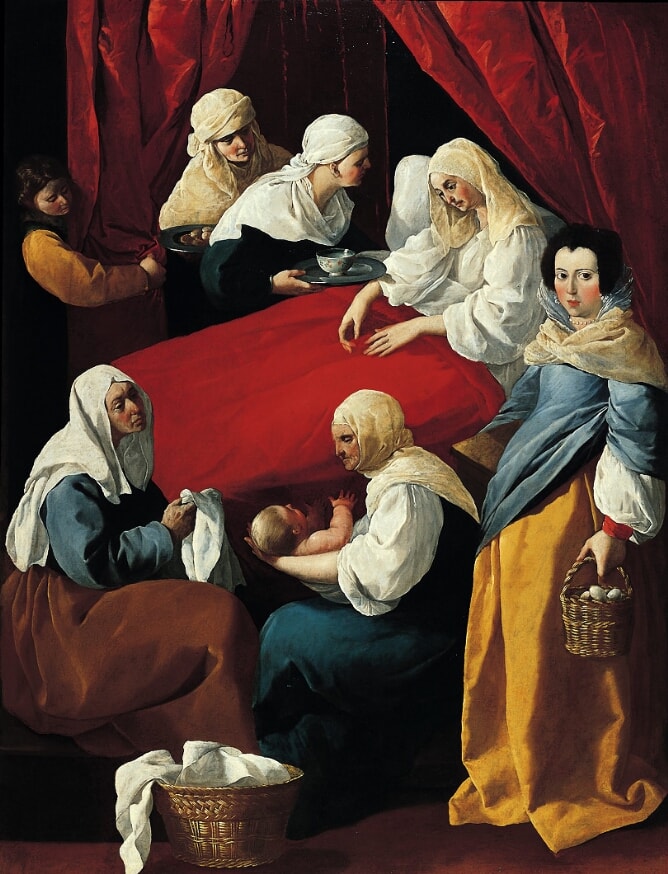
- Artist: Francisco de Zurbarán
- Era: Baroque (1625–1630)
- Cultural Context: Created for religious purposes, this reflects the Counter-Reformation’s emphasis on devotion.
- Theme: The Virgin Mary's birth, a scene steeped in domestic and divine significance.
- Key Figures: St. Anne, attendants, and infant Mary in a humble yet dignified setting.
- Techniques: Strong chiaroscuro and realistic details characteristic of Zurbarán's style.
- Symbolism: This painting represents purity and the sanctity of Mary’s life.
- Significance: A masterful portrayal of sacred history, balancing realism with spirituality.
12. Napoleon Crossing the Alps by Jacques-Louis David
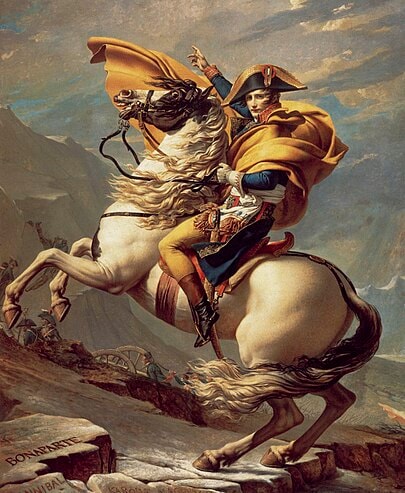
- Artist: Jacques-Louis David
- Era: Neoclassical (1801)
- Cultural Context: Made to glorify Napoleon’s military achievements during his campaign.
- Theme: Napoleon was a heroic leader, symbolising power and determination.
- Key Figures: Napoleon on a rearing horse, with inscriptions referencing historical conquerors.
- Techniques: Idealised portrayal with dramatic composition and rich colours.
- Symbolism: Represents leadership, courage, and triumph.
- Significance: An iconic image of propaganda art.
13. The Hay Wain by John Constable
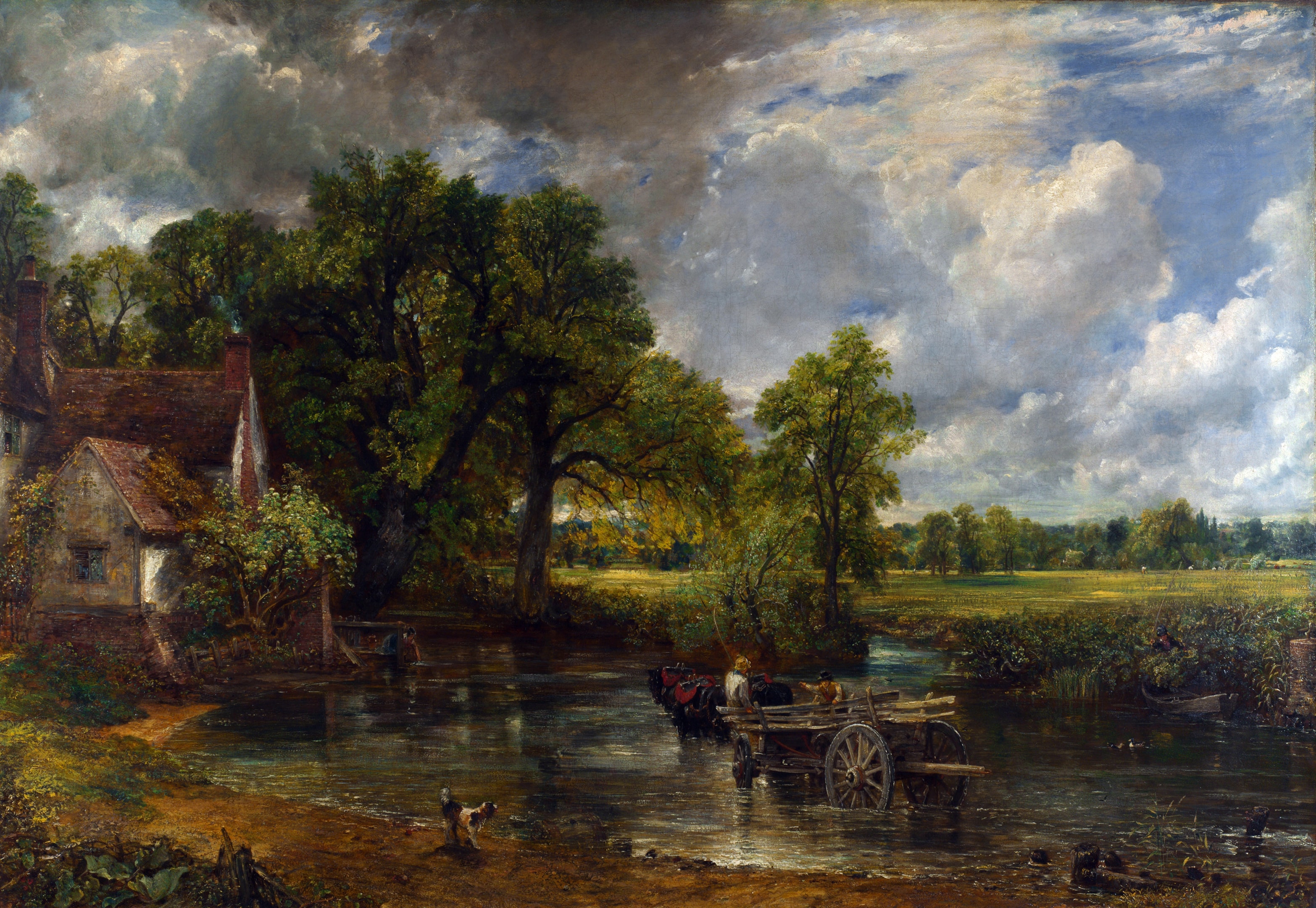
- Artist: John Constable
- Era: Romanticism (1821)
- Cultural Context: This shows the rural English life during the Industrial Revolution, emphasising nature’s beauty.
- Theme: A tranquil countryside place featuring a cart crossing a river.
- Key Figures: The hay wain (a wooden cart) and the idyllic landscape of Dedham Vale.
- Techniques: Use of natural light and loose brushwork to capture the essence of nature.
- Symbolism: This represents Constable’s deep connection to the English countryside.
- Significance: This British art is celebrated by bringing harmony to nature and humanity.
14. Impression, Sunrise by Claude Monet
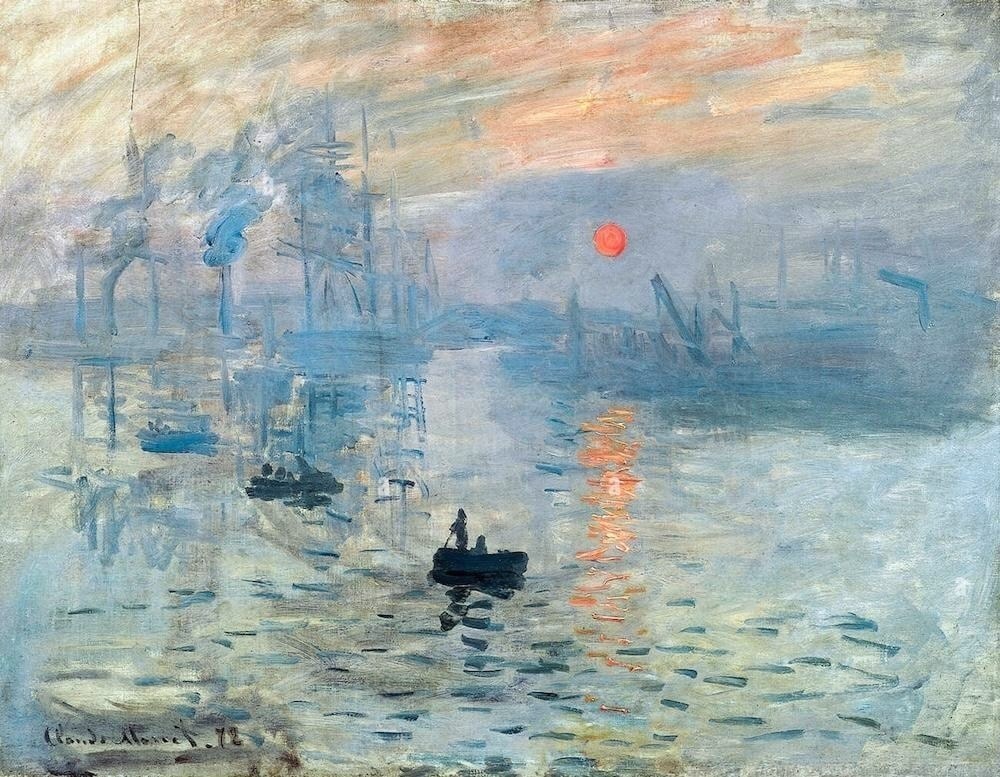
- Artist: Claude Monet
- Era: Impressionism (1872)
- Cultural Context: This marks the start of the Impressionist movement, challenging traditional artistic norms.
- Theme: A sunrise over the port of Le Havre, capturing fleeting light and atmosphere.
- Key Figures: Tiny silhouettes of boats and figures against a glowing sky.
- Techniques: Rapid brushstrokes and vibrant colour contrasts evoke a transient moment.
- Symbolism: This painting is a symbol of modern art.
- Significance: Gave its name to the Impressionist movement, symbolising a new artistic era.
15. The Starry Night by Vincent Van Gogh
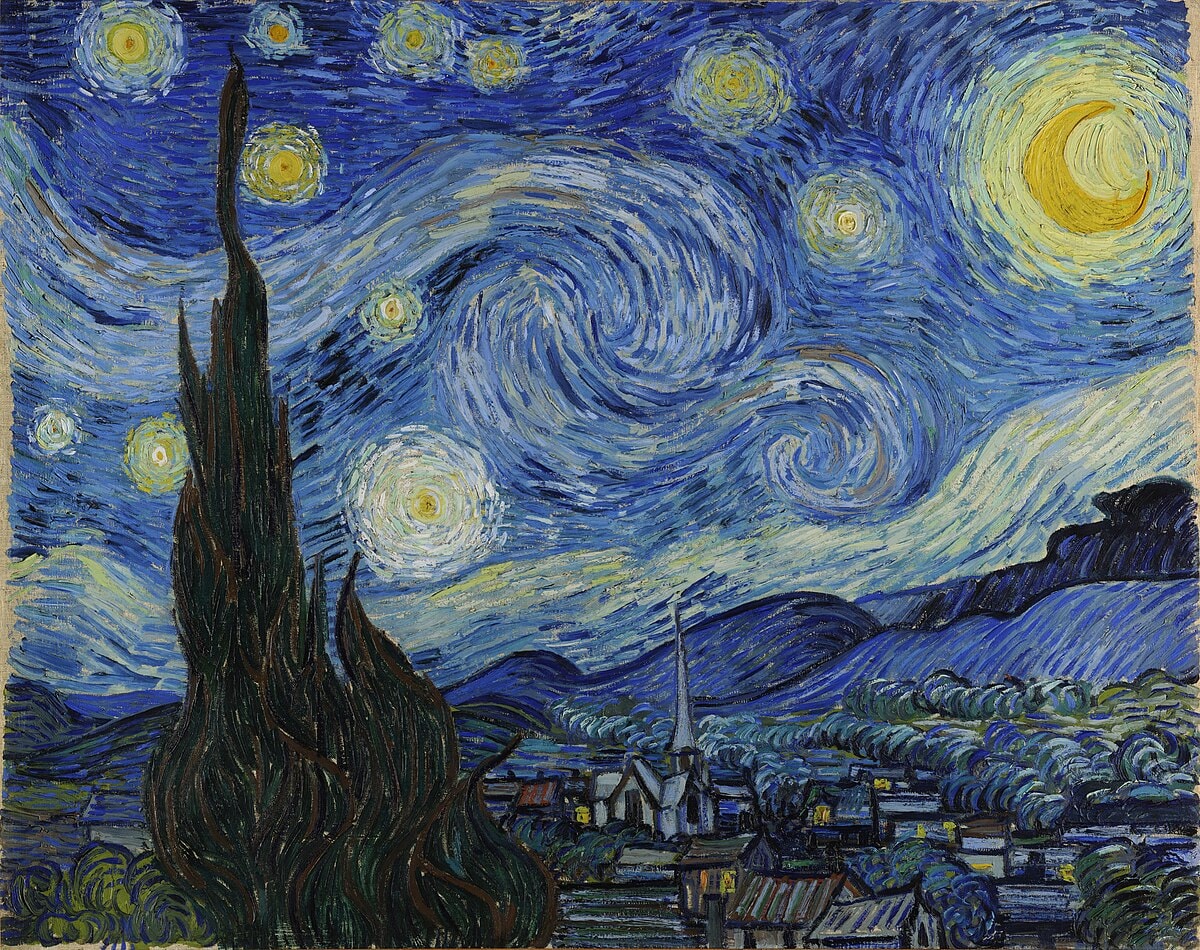
- Artist: Vincent van Gogh
- Era: Post-Impressionism (1889)
- Cultural Context: Painted during Van Gogh’s stay at an asylum, showing his inner turmoil and creativity.
- Theme: A night sky filled with swirling stars and a peaceful village below.
- Key Figures: The cypress tree, a recurring symbol in Van Gogh’s work, and the vibrant celestial elements.
- Techniques: Bold, swirling brushstrokes and vivid, contrasting colours.
- Symbolism: Represents the artist’s emotional and spiritual connection to the universe.
- Significance: One of Van Gogh’s most famous works.
16. The Starry Night Over the Rhône by Vincent Van Gogh
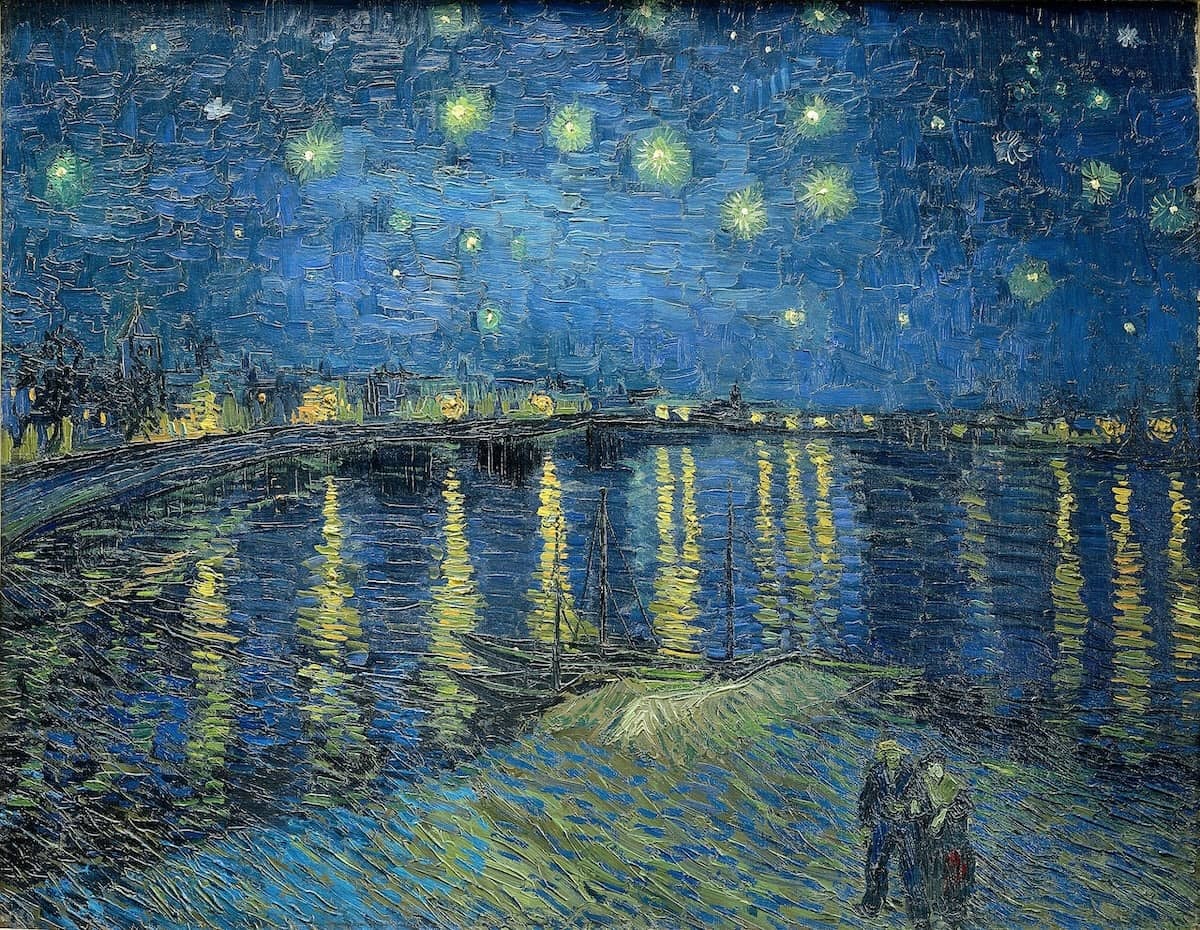
- Artist: Vincent van Gogh
- Era: Post-Impressionism (1888)
- Cultural Context: Painted during Van Gogh’s time in Arles, showcasing his fascination with night scenes and reflections on water.
- Theme: A tranquil night by the Rhône River, highlighting the connection of natural and artificial light.
- Key Figures: Two small figures walking along the riverbank, overshadowed by the grandeur of the night sky.
- Techniques: Vibrant colours, bold brushstrokes, and the interplay of light and shadow.
- Symbolism: This symbol represents Van Gogh’s appreciation for the beauty of the night and the unity between nature and human life.
- Significance: A precursor to his famous The Starry Night, capturing serenity and connection with nature.
17. Irises by Vincent van Gogh
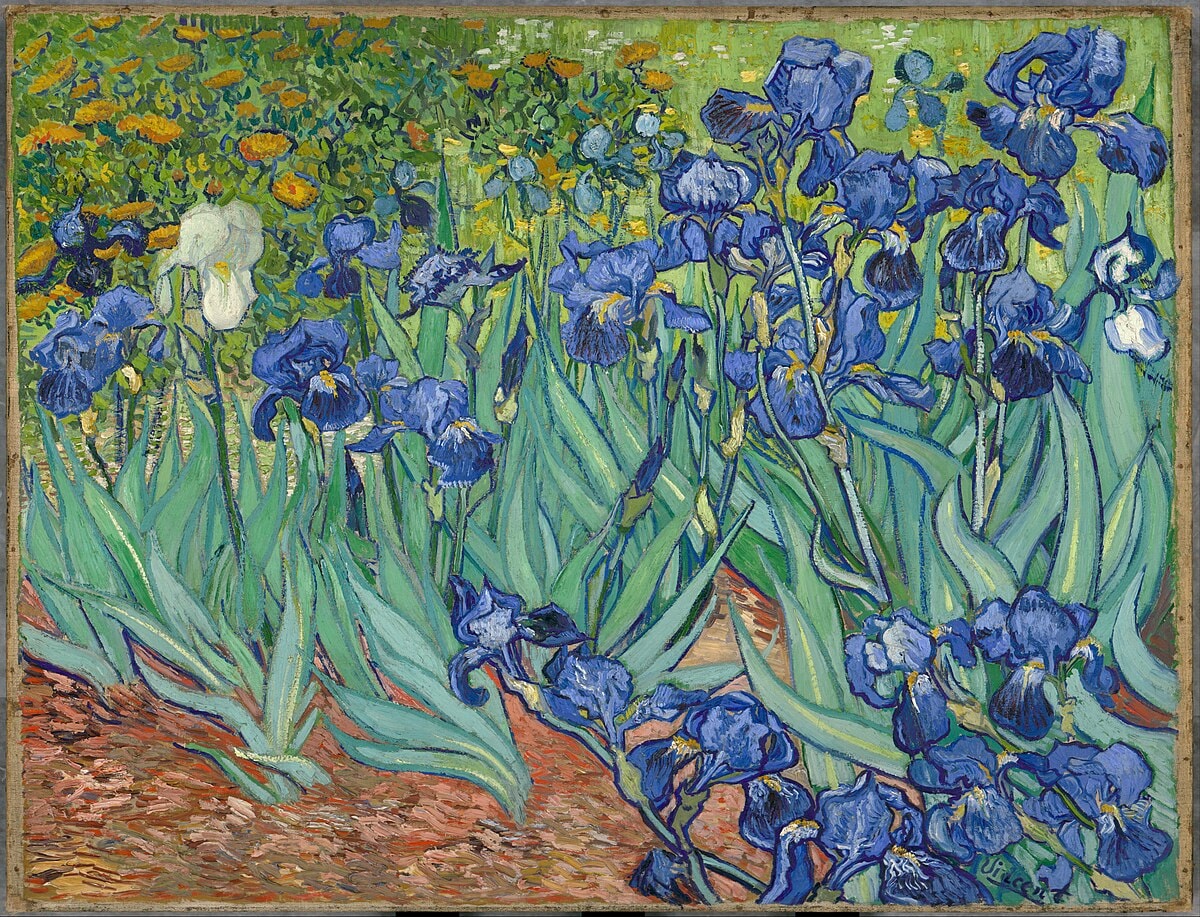
- Artist: Vincent van Gogh
- Era: Post-Impressionism (1890)
- Cultural Context: Made to celebrate the birth of Van Gogh’s nephew, reflecting themes of new life and hope.
- Theme: Blossoming almond branches set against a clear blue sky, inspired by Japanese art.
- Key Figures: The delicate blossoms symbolising renewal and growth.
- Techniques: Thin, precise brushstrokes and a soft, harmonious colour scheme.
- Symbolism: Represents hope, life, and Van Gogh’s admiration for nature’s resilience.
- Significance: One of Van Gogh’s most personal works, demonstrating his ability to combine simplicity with emotional depth.
18. Almond Blossoms by Vincent van Gogh
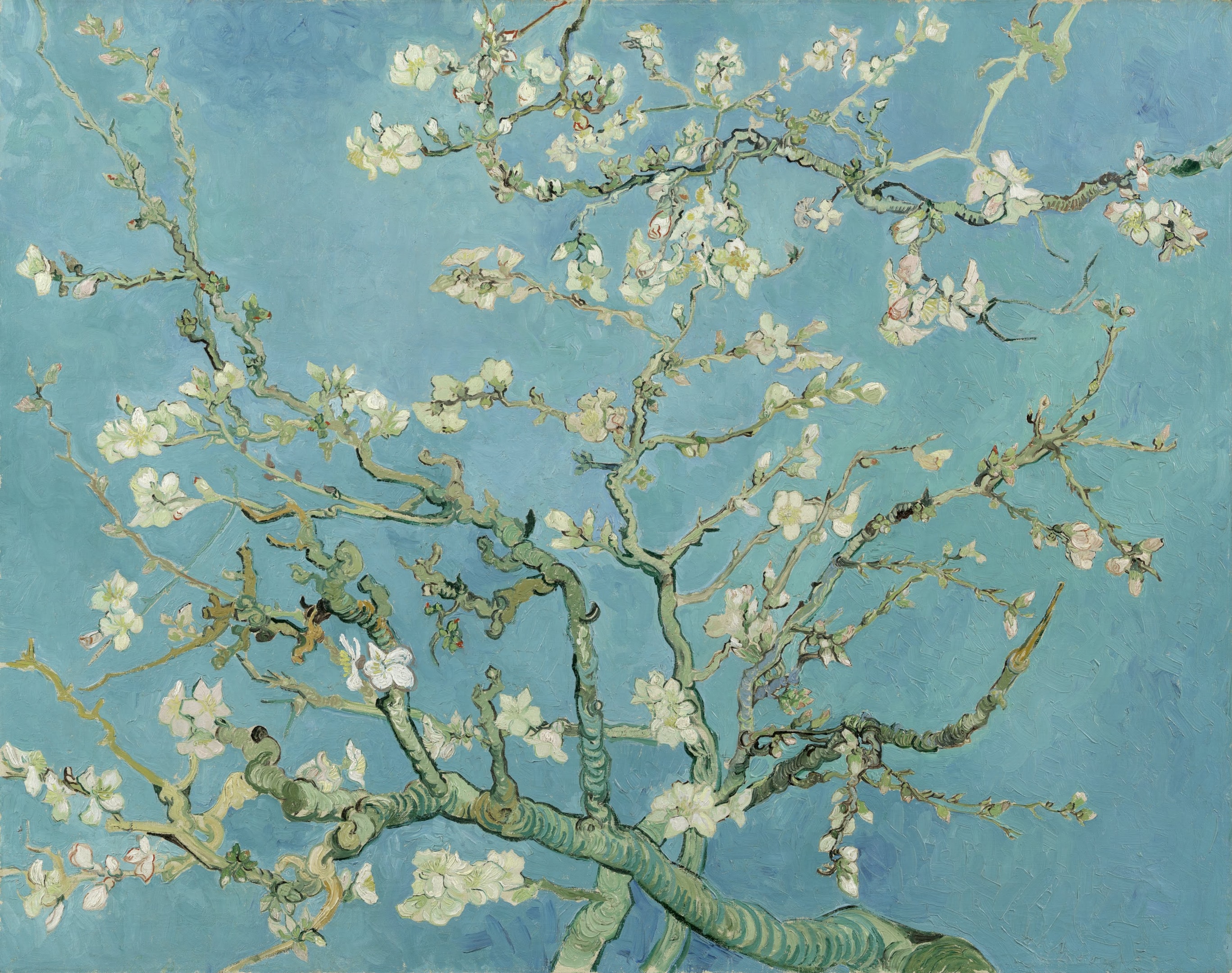
- Artist: Vincent van Gogh
- Era: Post-Impressionism (1890)
- Cultural Context: Made to celebrate the birth of Van Gogh’s nephew, reflecting themes of new life and hope.
- Theme: Blossoming almond branches set against a clear blue sky, inspired by Japanese art.
- Key Figures: The delicate blossoms symbolising renewal and growth.
- Techniques: Thin, precise brushstrokes and a soft, harmonious colour scheme.
- Symbolism: Represents hope, life, and Van Gogh’s admiration for nature’s resilience.
- Significance: One of Van Gogh’s most personal works, demonstrating his ability to combine simplicity with emotional depth.
19. The Card Players by Paul Cézanne
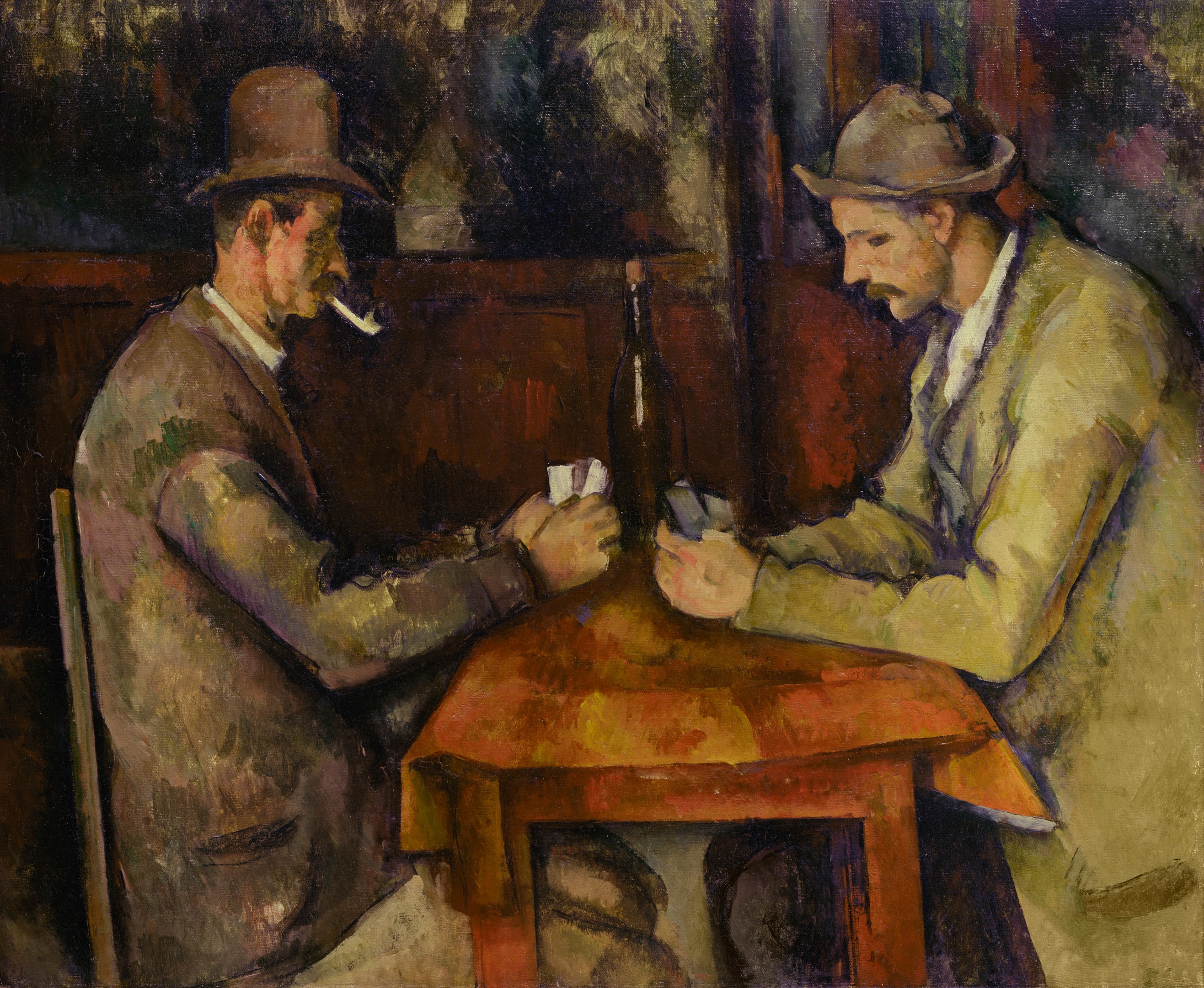
- Artist: Paul Cézanne
- Era: Post-Impressionism (1890–1895)
- Cultural Context: Depicts rural French life, focusing on the quiet dignity of ordinary people.
- Theme: A timeless scene of two men playing a card game, reflecting concentration and simplicity.
- Key Figures: The two players are sitting in stillness, surrounded by minimal details.
- Techniques: Subtle, layered brushstrokes, and careful composition to create balance and form.
- Symbolism: Highlights themes of focus, routine, and human connection.
- Significance: Celebrated as one of Cézanne’s masterpieces, influencing modern art with its geometric approach.
20. A Sunday Afternoon on the Island of La Grande Jatte by Georges Seurat
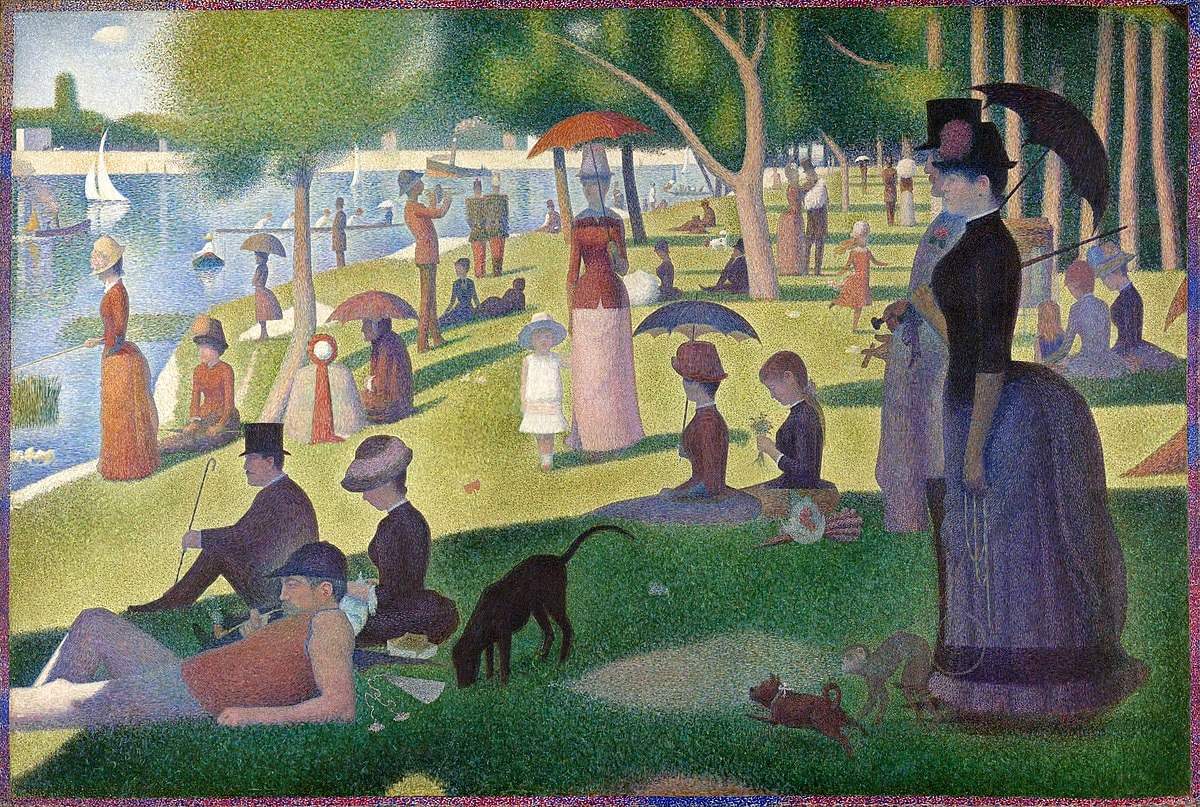
- Artist: Georges Seurat
- Era: Pointillism/Neo-Impressionism (1884–1886)
- Cultural Context: A foundation of the Neo-Impressionist movement, showcasing scientific precision in art.
- Theme: A Sunday afternoon by the Seine, filled with diverse characters and activities.
- Key Figures: Various figures, including a woman with a parasol, a couple, and a child, are depicted in a stylised manner.
- Techniques: Pointillism – tiny dots of pure colour arranged to create a cohesive image.
- Symbolism: Represents modern life, leisure, and the interaction of individuals within a shared space.
- Significance: A revolutionary artwork that bridged traditional and modern approaches, influencing future movements like Cubism.
21. The Persistence of Memory by Salvador Dalí
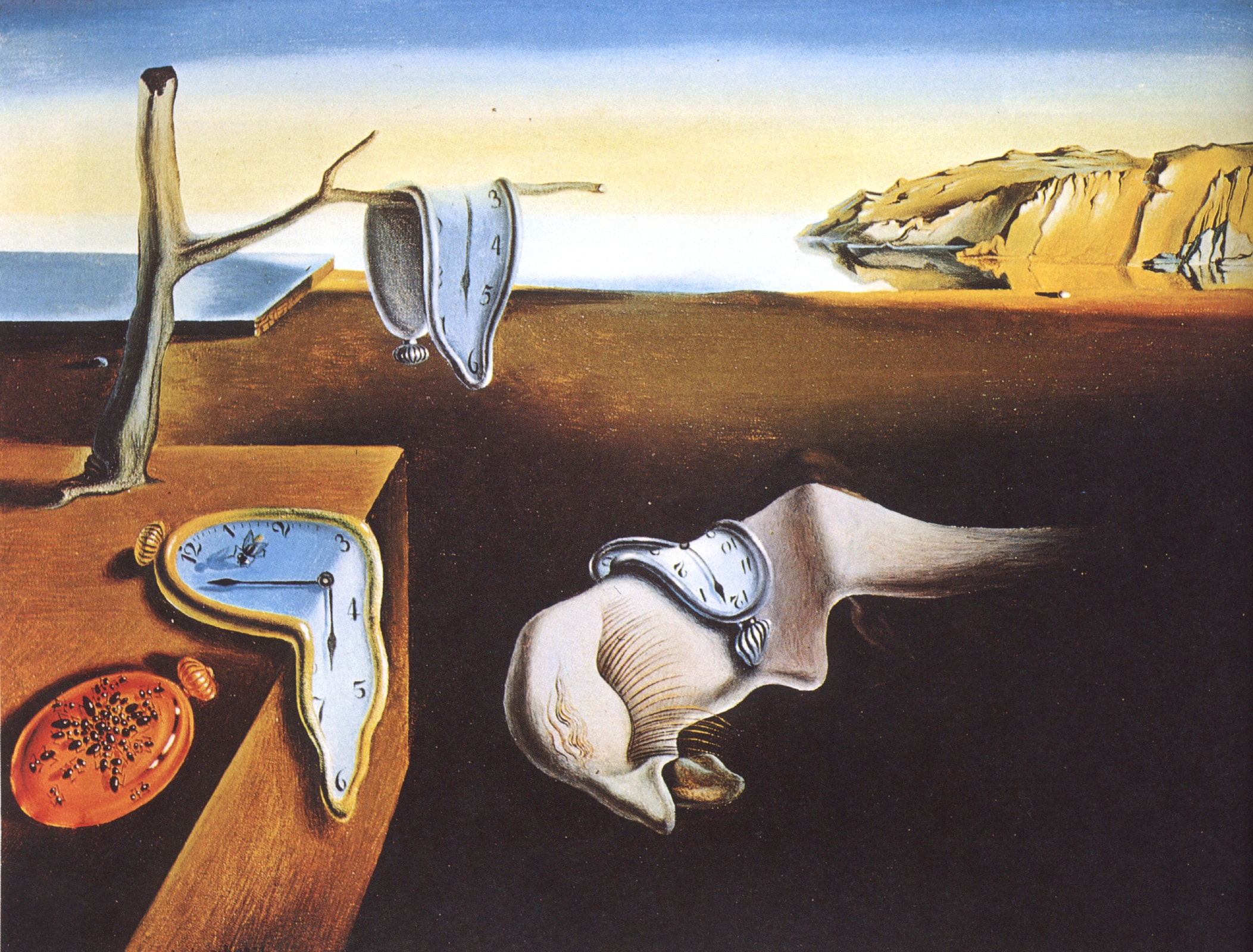
- Artist: Salvador Dalí
- Era: Surrealism (1931)
- Cultural Context: Created at the height of the Surrealist movement, reflecting subconscious and dreamlike imagery.
- Theme: A surreal landscape featuring melting clocks, symbolising the fluidity of time and memory.
- Key Figures: The distorted clocks, an amorphous figure in the centre, and a desolate backdrop.
- Techniques: Precise, hyper-realistic rendering of surreal elements.
- Symbolism: Represents the malleable nature of time and human perception.
- Significance: One of Dalí’s most famous works, epitomising the surrealist exploration of the mind and time.
22. The Son of Man by René Magritte
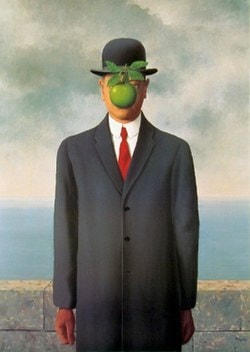
- Artist: René Magritte
- Era: Surrealism (1964)
- Cultural Context: A personal work of Magritte that challenges the viewer’s perception and understanding of reality.
- Theme: A man in a suit with his face obscured by a floating green apple.
- Key Figures: The faceless man represents anonymity and mystery.
- Techniques: Crisp, realistic style juxtaposed with surreal, thought-provoking elements.
- Symbolism: Explores themes of concealment, identity, and the limits of perception.
- Significance: A widely recognised image in popular culture, embodying the surrealist fascination with the ordinary and mysterious.
23. Guernica by Pablo Picasso
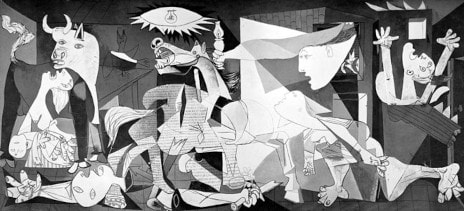
- Artist: Pablo Picasso
- Era: Cubism/Political Art (1937)
- Cultural Context: Created in response to the bombing of Guernica during the Spanish Civil War.
- Theme: A powerful anti-war statement depicting the suffering caused by violence.
- Key Figures: Fragmented, anguished figures, including a screaming woman and a dying horse.
- Techniques: Monochromatic palette with a Cubist and expressionist style to heighten emotional impact.
- Symbolism: Represents the horrors of war and human suffering.
- Significance: A universal symbol of peace and a poignant critique of the brutality of war.
24. The Old Guitarist by Pablo Picasso
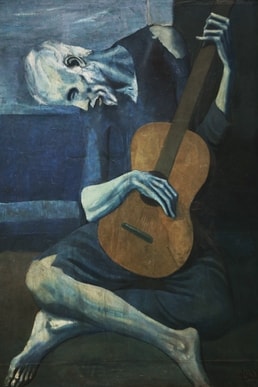
- Artist: Pablo Picasso
- Era: Blue Period (1903–1904)
- Cultural Context: Created during Picasso’s Blue Period, reflecting themes of poverty and despair.
- Theme: A blind, elderly man playing a guitar represents loneliness and resilience.
- Key Figures: The lone guitarist, with his gaunt figure and melancholic expression.
- Techniques: Monochromatic blue palette to evoke sadness and isolation.
- Symbolism: The guitar symbolises solace and the enduring power of art amidst hardship.
- Significance: A seminal work of Picasso’s Blue Period, showcasing his emotional depth and empathy.
25. The Girl with a Mandolin by Pablo Picasso
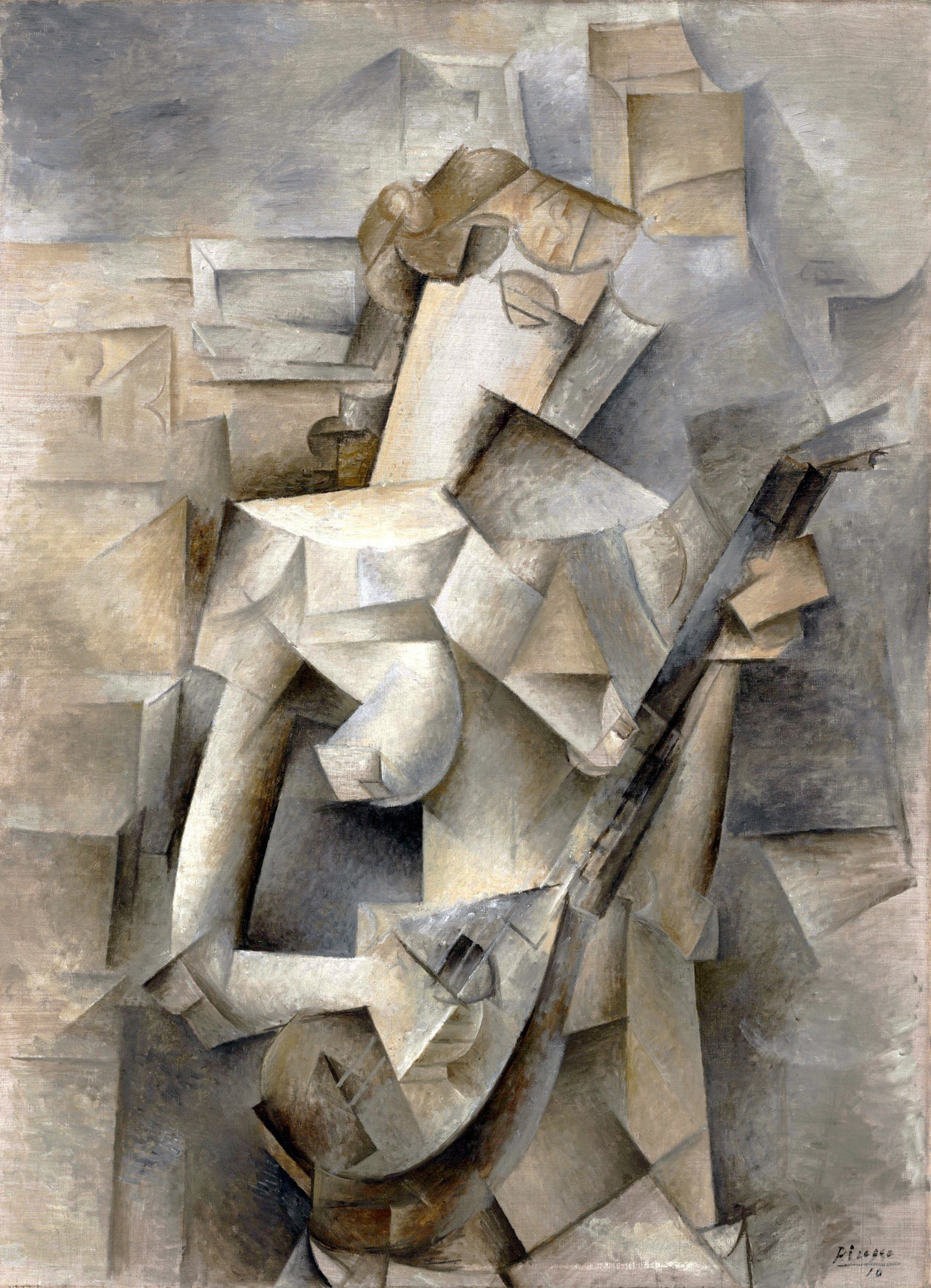
- Artist: Pablo Picasso
- Era: Analytical Cubism (1910)
- Cultural Context: Reflects Picasso’s exploration of Cubism, breaking down forms into geometric shapes.
- Theme: A fragmented yet harmonious depiction of a girl playing a mandolin.
- Key Figures: The girl and her mandolin are abstractly rendered in muted tones.
- Techniques: Geometric deconstruction of forms and subtle tonal gradation.
- Symbolism: Represents the intersection of music, art, and abstraction.
- Significance: A hallmark of Picasso’s Cubist experimentation, influencing the direction of modern art.
26. The Kiss by Gustav Klimt
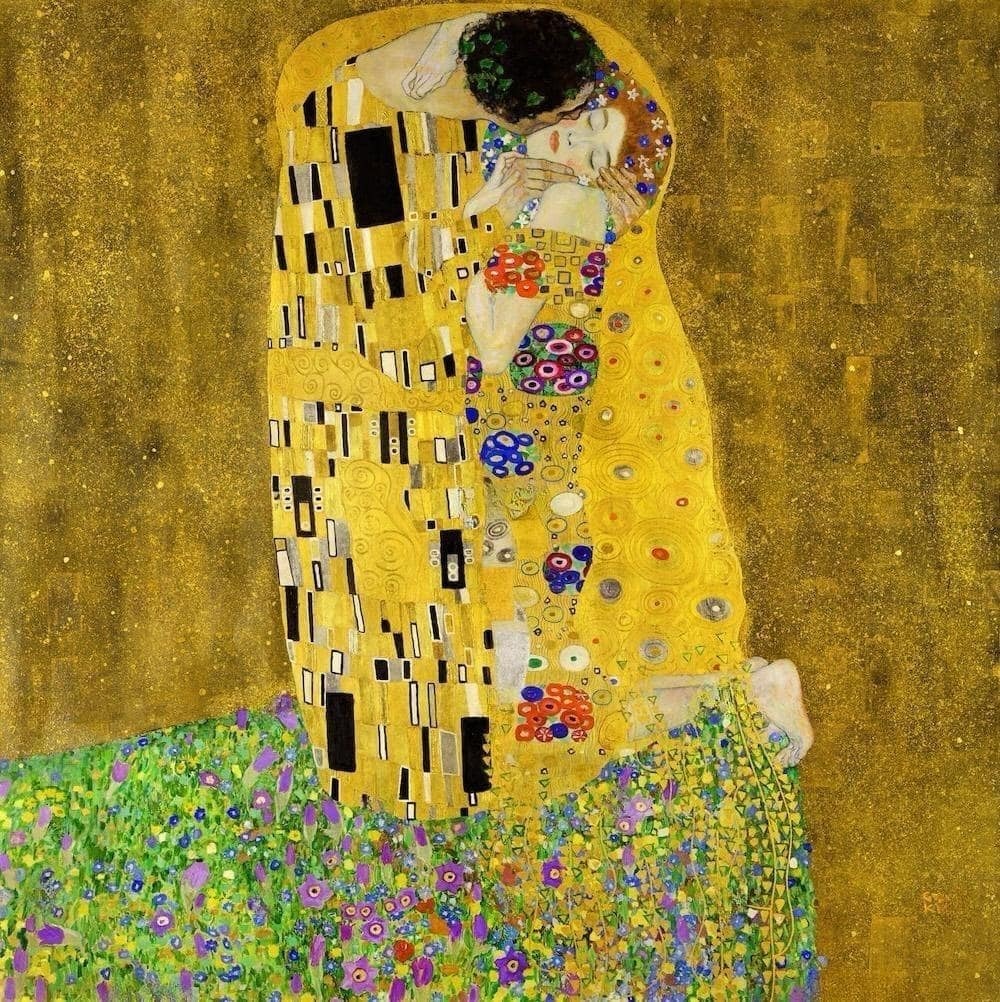
- Artist: Gustav Klimt
- Era: Symbolism/Art Nouveau (1907–1908)
- Cultural Context: Created during Klimt’s “Golden Phase,” inspired by Byzantine mosaics and romantic ideals.
- Theme: A passionate embrace between two lovers, set against a decorative golden background.
- Key Figures: A couple entwined, surrounded by intricate patterns.
- Techniques: Use of gold leaf, bold patterns, and flattened decorative forms.
- Symbolism: Represents love, intimacy, and transcendence.
- Significance: One of Klimt’s most celebrated works, embodying the spirit of Art Nouveau and the timeless appeal of romantic love.
27. The Two Fridas by Frida Kahlo
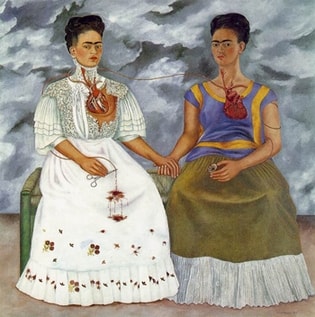
- Artist: Frida Kahlo
- Era: Surrealism/Magic Realism (1939)
- Cultural Context: Created during Kahlo’s emotional turmoil following her divorce from Diego Rivera.
- Theme: A dual self-portrait symbolising her divided identity and emotional struggles.
- Key Figures: Two versions of Frida, one in European attire and the other in traditional Mexican dress, connected by visible veins.
- Techniques: Symbolic use of colour, detailed anatomy, and surreal composition.
- Symbolism: Represents her dual heritage, emotional pain, and resilience.
- Significance: A deeply personal and iconic work encapsulating themes of identity, love, and suffering.
28. American Gothic by Grant Wood
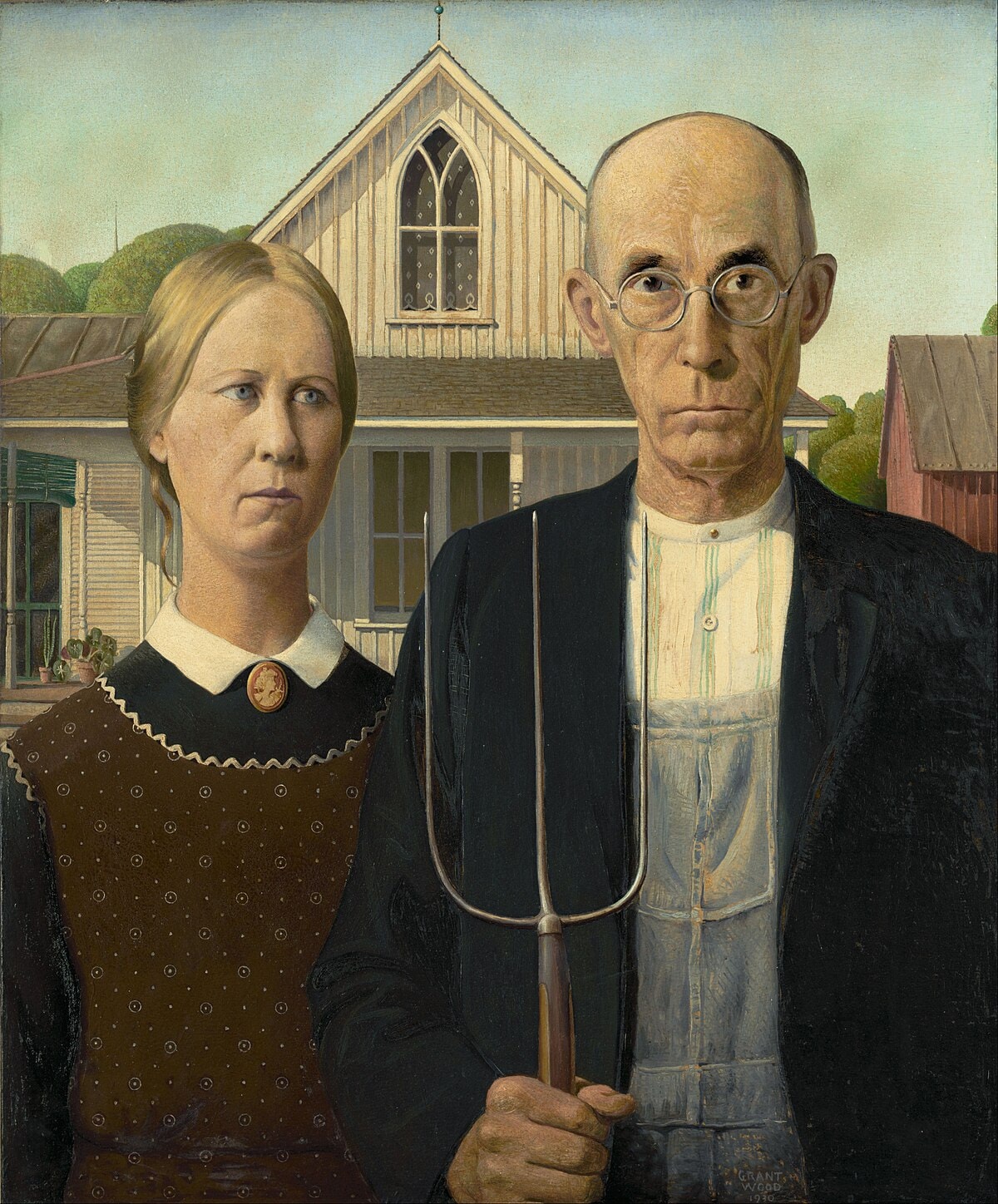
- Artist: Grant Wood
- Era: Regionalism (1930)
- Cultural Context: Reflects the rural American Midwest during the Great Depression.
- Theme: A depiction of a farmer and his daughter in front of their house, symbolising hard work and resilience.
- Key Figures: The farmer and his daughter (posed by Wood’s dentist and sister), dressed in traditional clothing.
- Techniques: Realistic style with meticulous attention to detail and composition.
- Symbolism: Represents rural values and the stark realities of farm life.
- Significance: An iconic representation of American culture and a subject of widespread interpretation and parody.
29. Whistler’s Mother by James Abbott McNeill Whistler
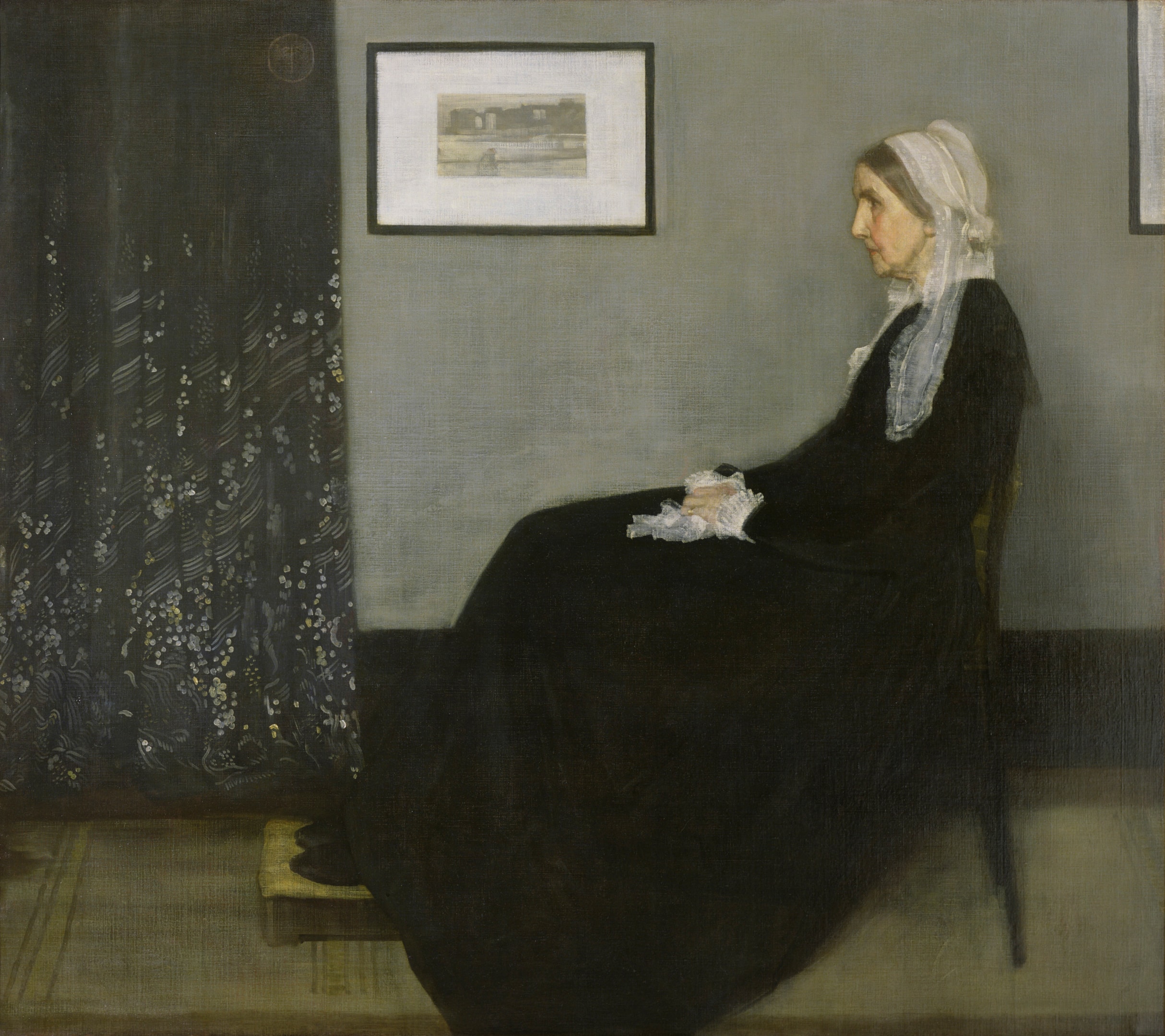
- Artist: James Abbott McNeill Whistler
- Era: Realism/Tonalism (1871)
- Cultural Context: Painted as a portrait of Whistler’s mother, symbolising respect and familial devotion.
- Theme: A serene and dignified portrayal of maternal grace.
- Key Figures: Anna McNeill Whistler, seated against a stark, minimal backdrop.
- Techniques: Muted tones and careful composition, with an emphasis on harmony and balance.
- Symbolism: Represents motherhood, piety, and simplicity.
- Significance: Known as an American masterpiece, revered for its universality and emotional depth.
30. Christina’s World by Andrew Wyeth
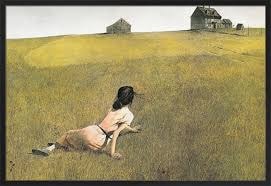
- Artist: Andrew Wyeth
- Era: Realism (1948)
- Cultural Context: Inspired by Wyeth’s neighbour, Christina Olson, who suffered from a debilitating condition.
- Theme: A young woman lying in a field, gazing toward a distant farmhouse.
- Key Figures: Christina is depicted as having both vulnerability and determination.
- Techniques: Detailed rendering of the landscape and soft, natural tones.
- Symbolism: Reflects themes of isolation, longing, and resilience.
- Significance: A celebrated work in American art, blending realism with emotional poignancy.
31. The Scream by Edvard Munch
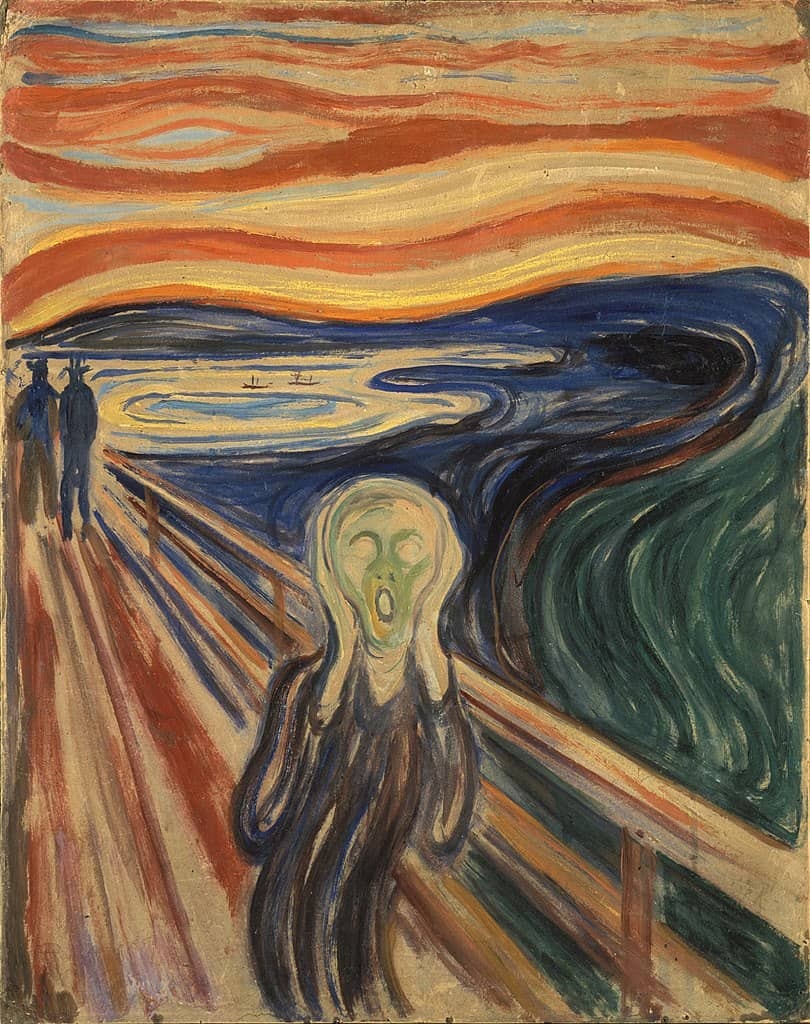
- Artist: Edvard Munch
- Era: Expressionism (1893)
- Cultural Context: Reflects Munch’s emotional struggles and existential angst.
- Theme: A figure standing on a bridge, emitting a silent scream under a swirling sky.
- Key Figures: The central figure is surrounded by vibrant and chaotic natural elements.
- Techniques: Bold, swirling strokes and vivid colours to evoke intense emotion.
- Symbolism: Represents anxiety, alienation, and the fragility of the human condition.
- Significance: A universal symbol of existential dread and one of the most recognisable artworks in the world.
32. Girl with a Pearl Earring by Johannes Vermeer
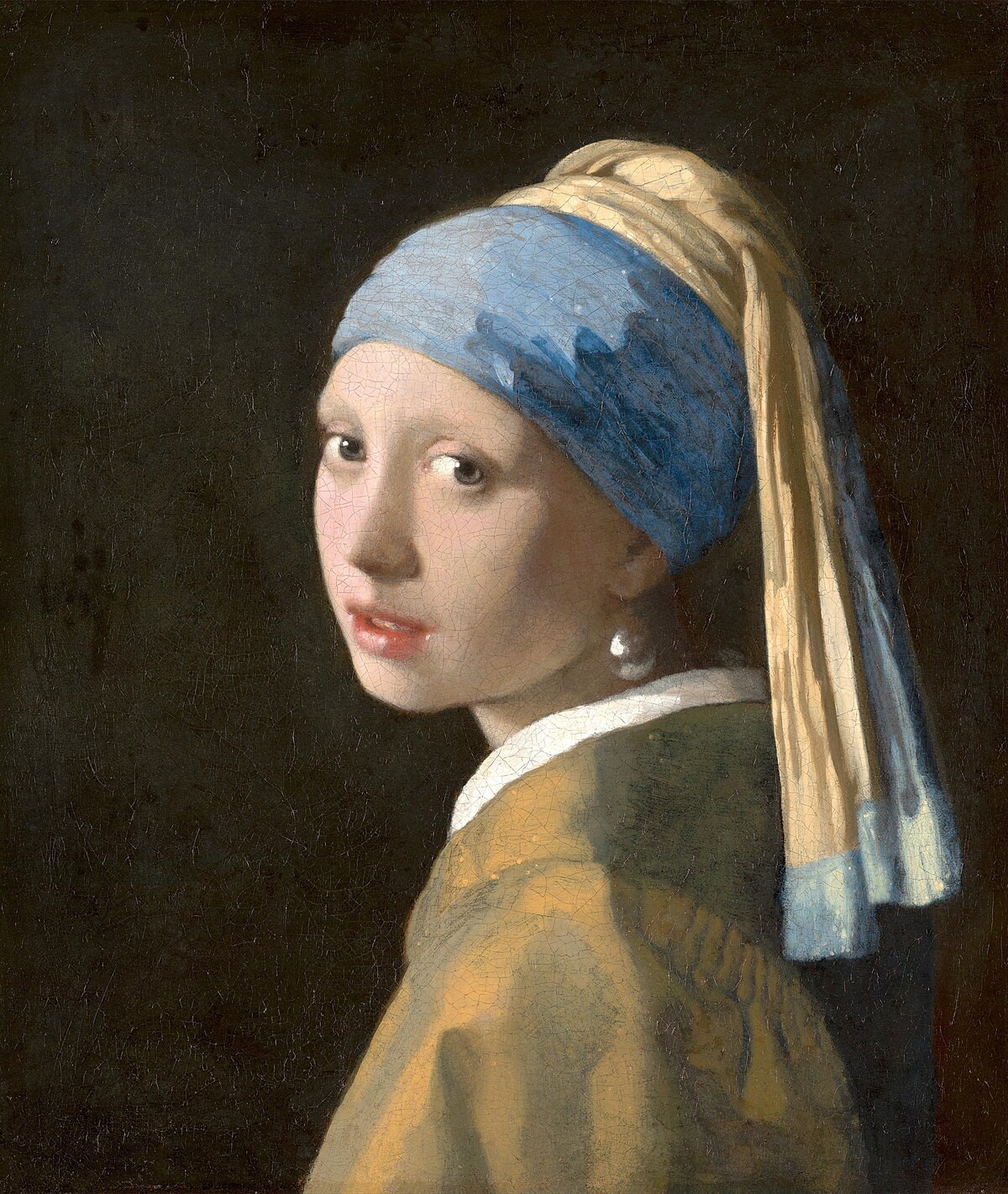
- Artist: Johannes Vermeer
- Era: Dutch Golden Age (1665)
- Cultural Context: Often referred to as the “Mona Lisa of the North,” it reflects Vermeer’s mastery of light and portraiture.
- Theme: A young woman glancing over her shoulder, wearing a pearl earring.
- Key Figures: The girl, whose identity remains a mystery.
- Techniques: Subtle use of light and shadow (chiaroscuro) and a soft, luminous colour palette.
- Symbolism: The pearl earring symbolises purity and elegance.
- Significance: Celebrated for its intimacy and Vermeer’s unmatched skill in capturing fleeting expressions.
33. The Birth of Venus by William-Adolphe Bouguereau
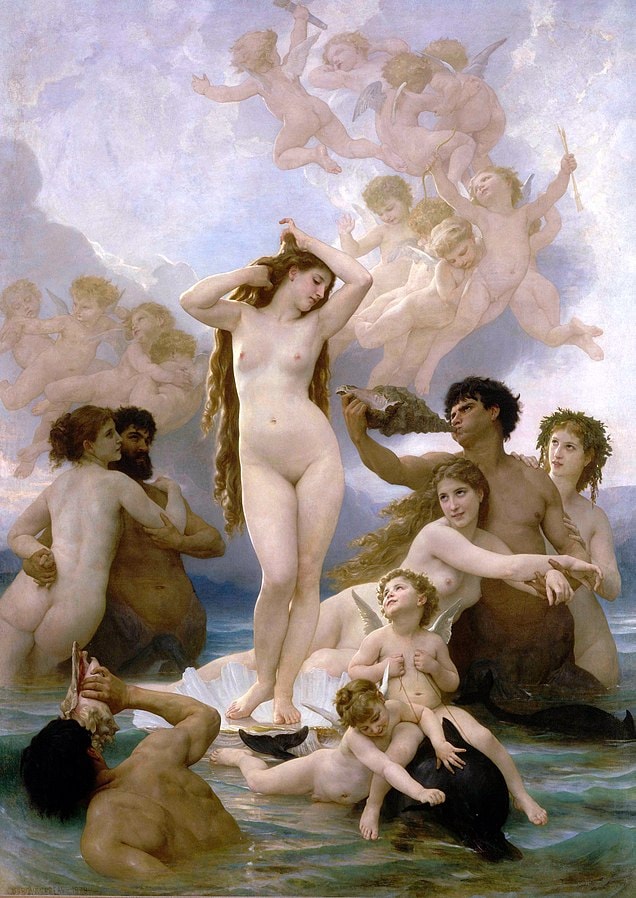
- Artist: William-Adolphe Bouguereau
- Era: Academic Art (1879)
- Cultural Context: Created during the height of Bouguereau’s career, showcasing his idealised and polished style.
- Theme: Venus, the Roman goddess of love, emerges from the sea on a shell.
- Key Figures: Venus at the centre, surrounded by cherubs and mythical figures.
- Techniques: Masterful use of smooth brushwork, intricate details, and a classical composition.
- Symbolism: Represents beauty, love, and divine femininity.
- Significance: A quintessential example of Academic art, known for its technical perfection and classical themes.
34. The Birth of Venus by Alexandre Cabanel
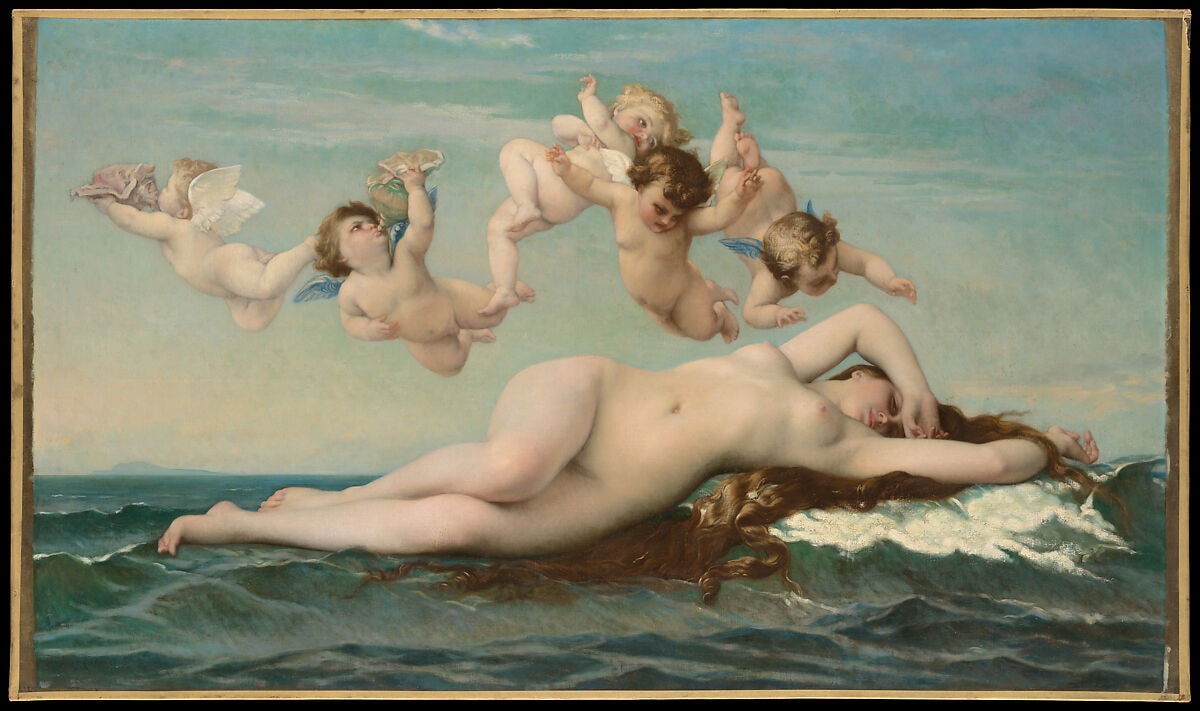
- Artist: Alexandre Cabanel
- Era: Academic Art (1863)
- Cultural Context: Commissioned for Napoleon III, reflecting the era’s fascination with mythology and sensuality.
- Theme: Venus reclining on the waves, embodying grace and allure.
- Key Figures: Venus at the centre, with cherubs playfully hovering above.
- Techniques: Soft, flowing lines and a delicate colour palette emphasising sensuality.
- Symbolism: Celebrates idealised beauty and romanticised mythology.
- Significance: A celebrated work of Academic art, bridging classical inspiration with modern sensuality.
35. The Garden of Earthly Delights by Hieronymus Bosch
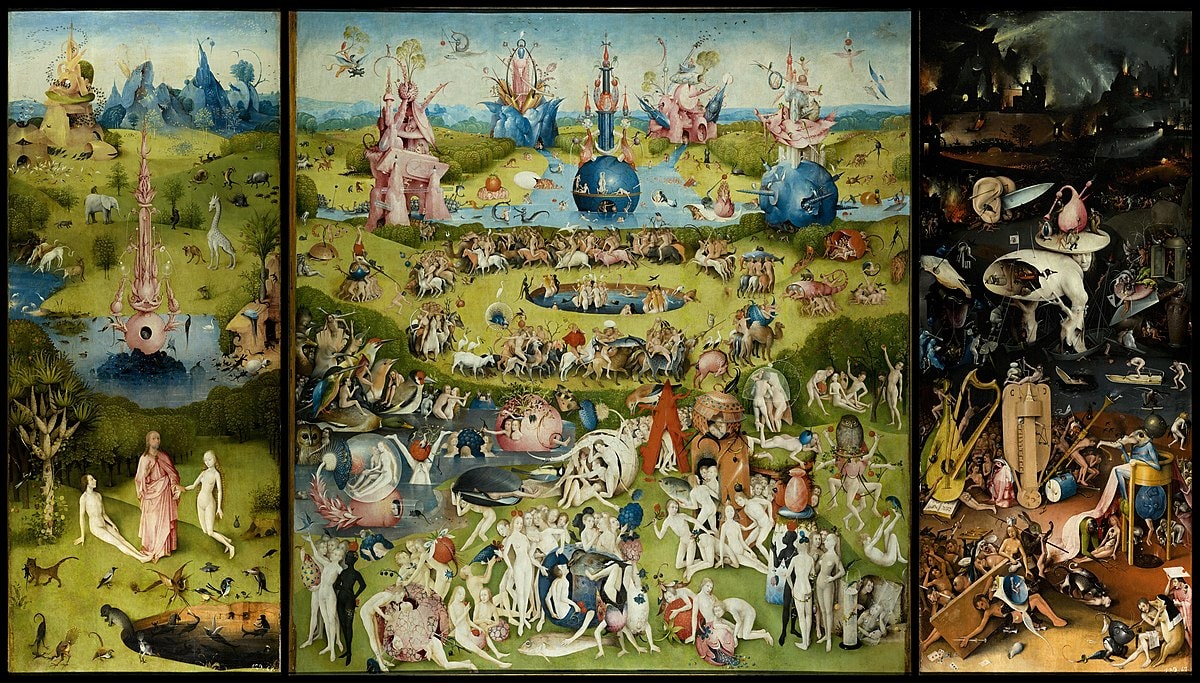
- Artist: Hieronymus Bosch
- Era: Early Netherlandish Art (1490–1510)
- Cultural Context: Reflects the late medieval fascination with morality, sin, and the afterlife.
- Theme: A triptych exploring paradise, earthly pleasures, and damnation.
- Key Figures: A multitude of figures engaged in surreal, fantastical scenes.
- Techniques: Intricate details and imaginative compositions across three panels.
- Symbolism: Represents the consequences of indulgence and the eternal struggle between good and evil.
- Significance: A landmark in Western art, celebrated for its imaginative vision and moral commentary.
36. The Creation of Adam by Michelangelo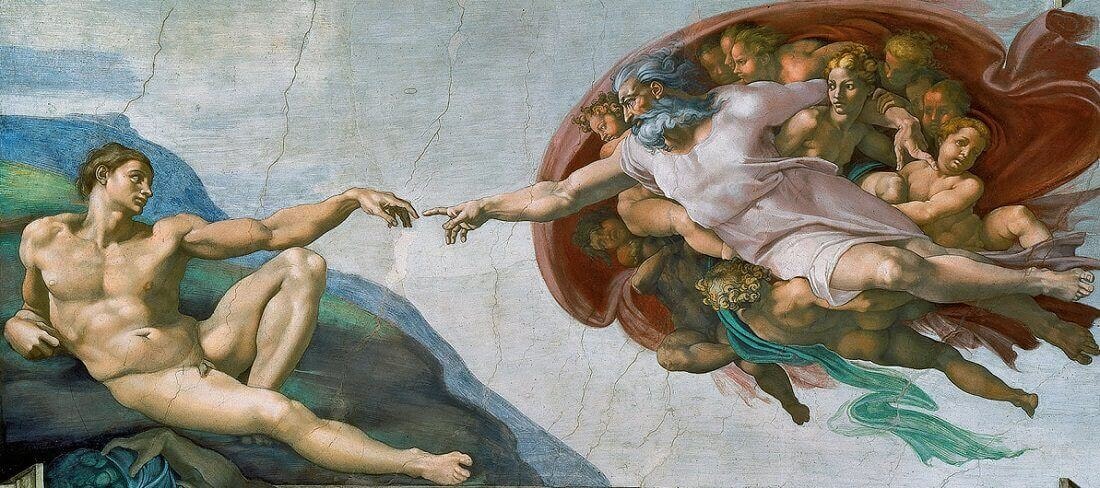
- Artist: Michelangelo
- Era: High Renaissance (1512)
- Cultural Context: Part of the Sistine Chapel ceiling, commissioned by Pope Julius II.
- Theme: God giving life to Adam, symbolising divine creation and human connection.
- Key Figures: God, surrounded by angels, reaching out to Adam in a dynamic pose.
- Techniques: Fresco technique with masterful anatomy and dramatic gestures.
- Symbolism: Represents the spark of life and humanity’s divine origins.
- Significance: One of the most iconic works of the Renaissance, embodying the era’s ideals of beauty and intellect.
37. Primavera by Sandro Botticelli
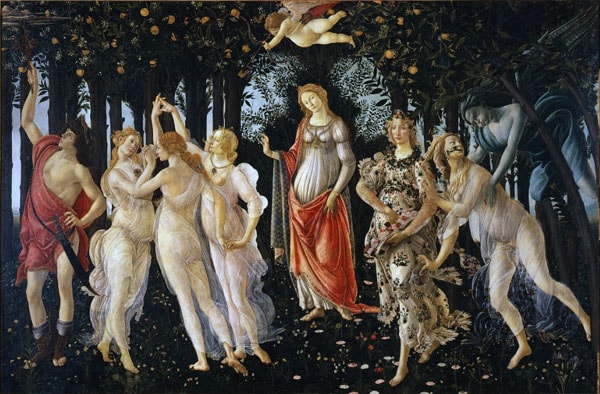
- Artist: Sandro Botticelli
- Era: Early Renaissance (1482)
- Cultural Context: Commissioned by the Medici family, reflecting their patronage of mythological themes.
- Theme: A celebration of spring, fertility, and the rebirth of nature.
- Key Figures: Venus, the Three Graces, Mercury, and other mythological figures in a lush garden.
- Techniques: Linear elegance, soft colours, and detailed representation of flora.
- Symbolism: Represents renewal, harmony, and the interplay of natural and divine forces.
- Significance: A masterpiece of mythological allegory, celebrated for its beauty and intricate symbolism.
38. The Assumption of the Virgin by Titian
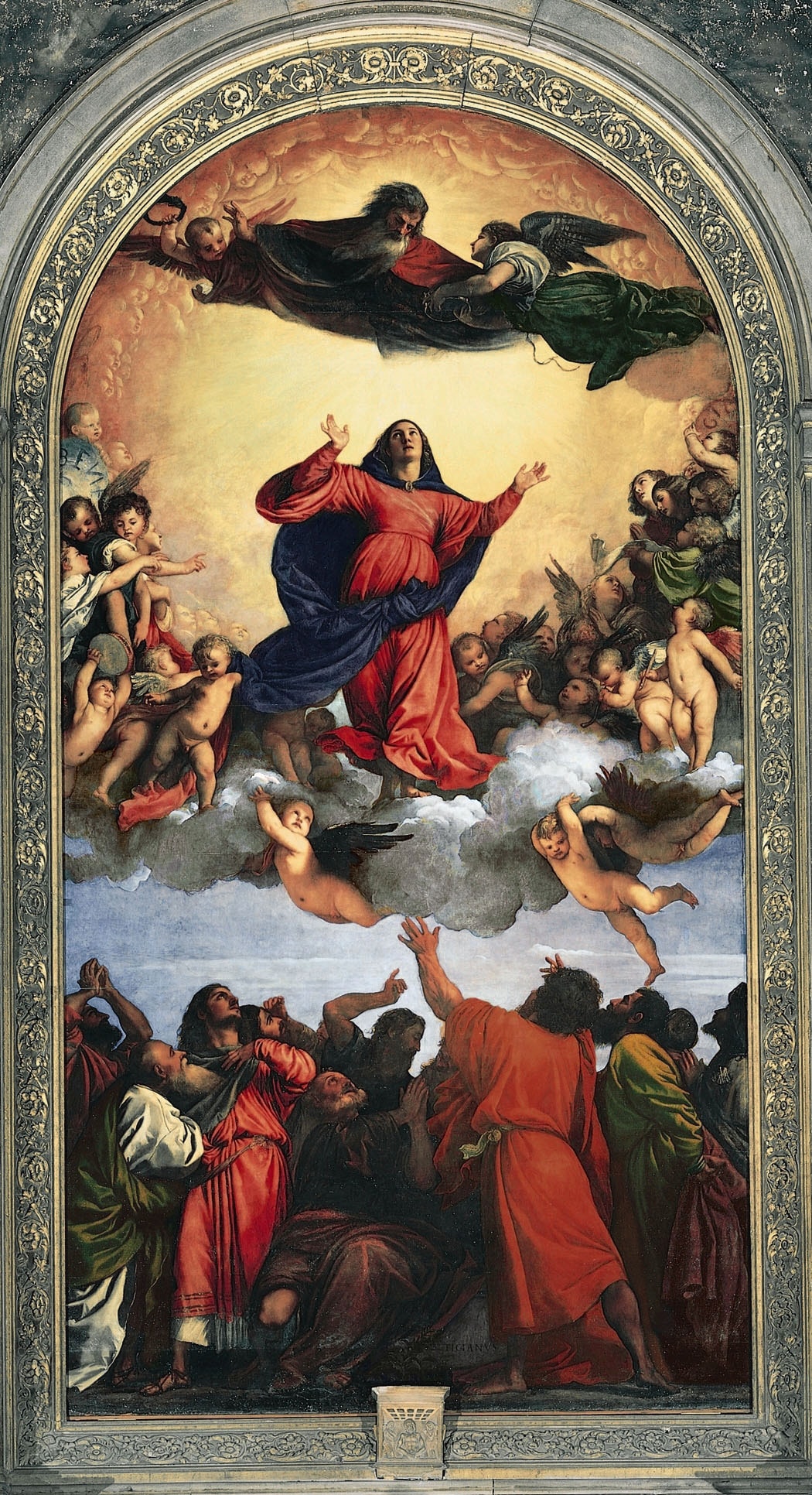
- Artist: Titian
- Era: High Renaissance (1516–1518)
- Cultural Context: Commissioned for the Basilica di Santa Maria Gloriosa dei Frari in Venice, reflecting the religious devotion of the time.
- Theme: The Virgin Mary’s ascent to heaven, surrounded by angels and worshippers.
- Key Figures: Mary at the centre, encircled by angels, with apostles gazing upward.
- Techniques: Bold use of colour, dramatic lighting, and dynamic composition.
- Symbolism: Represents divine grace and the unity of heaven and earth.
- Significance: A hallmark of Venetian art, showcasing Titian’s mastery of emotion and movement.
39. The Swing by Jean-Honoré Fragonard
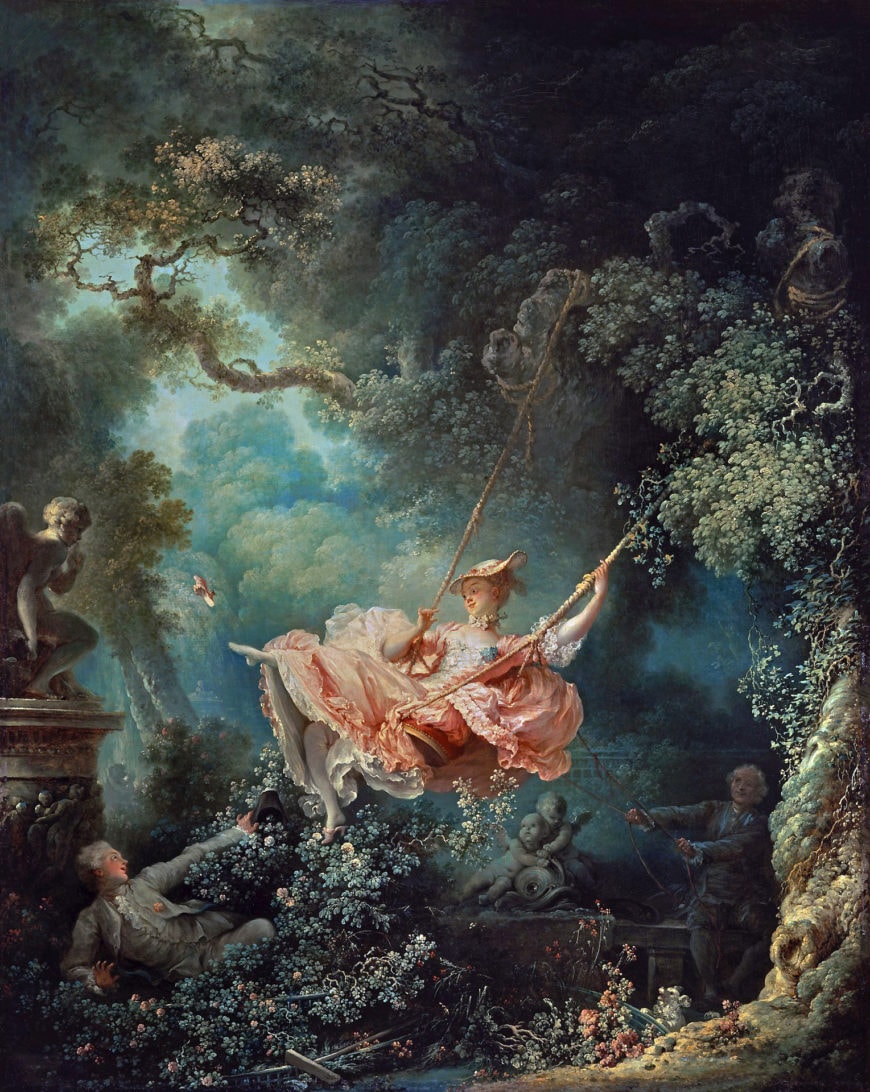
- Artist: Jean-Honoré Fragonard
- Era: Rococo (1767)
- Cultural Context: Created during a period of aristocratic leisure and indulgence, symbolising frivolity and romance.
- Theme: A young woman on a swing, playfully engaging with her admirer.
- Key Figures: The woman on the swing, her admirer hidden in the bushes, and an older man pushing her.
- Techniques: Soft brushwork, pastel tones, and intricate detail to convey lightness.
- Symbolism: Represents flirtation, desire, and the carefree nature of Rococo art.
- Significance: A quintessential example of Rococo style, celebrated for its charm and playfulness.
40. The Wanderer Above the Sea of Fog by Caspar David Friedrich
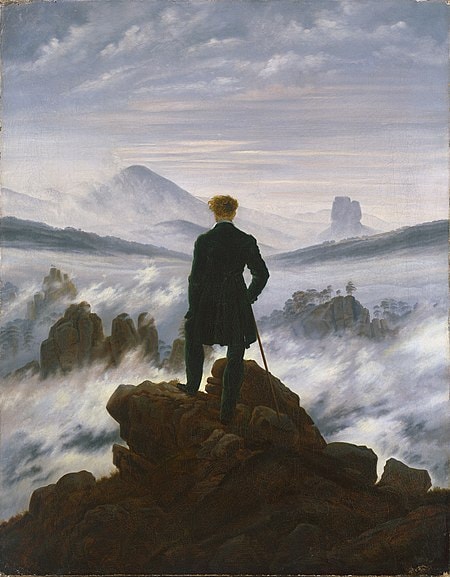
- Artist: Caspar David Friedrich
- Era: Romanticism (1818)
- Cultural Context: Embodies the Romantic ideal of the sublime, focusing on humanity’s relationship with nature.
- Theme: A lone figure gazing over a misty, mountainous landscape.
- Key Figures: The solitary wanderer is symbolic of introspection and exploration.
- Techniques: Atmospheric perspective and subdued tones to evoke mystery and awe.
- Symbolism: Represents the insignificance of man in the face of nature’s grandeur.
- Significance: A defining work of Romanticism, illustrating themes of solitude and transcendence.
41. Nighthawks by Edward Hopper
- Artist: Edward Hopper
- Era: Modernism (1942)
- Cultural Context: Painted during World War II, reflecting urban isolation and modern alienation.
- Theme: A quiet, late-night diner scene, capturing a sense of loneliness and stillness.
- Key Figures: Three patrons and a counterman in a starkly lit diner.
- Techniques: Clean lines, stark lighting, and a muted colour palette.
- Symbolism: Represents isolation in modern life and the stillness of urban spaces.
- Significance: An iconic piece of American art that evokes deep emotional resonance and timeless relevance
42. Bal du moulin de la Galette by Pierre-Auguste Renoir
- Artist: Pierre-Auguste Renoir
- Era: Impressionism (1876)
- Cultural Context: Depicts the lively social scene of 19th-century Paris, celebrating leisure and joy.
- Theme: A bustling outdoor dance at the Moulin de la Galette.
- Key Figures: Parisian revellers, dancers, and onlookers in a sun-dappled setting.
- Techniques: Loose brushstrokes and vibrant colours to capture light and movement.
- Symbolism: Represents the carefree spirit of urban leisure.
- Significance: A masterpiece of Impressionism, celebrated for its depiction of joy and fleeting moments.
43. The Bedroom by Vincent van Gogh
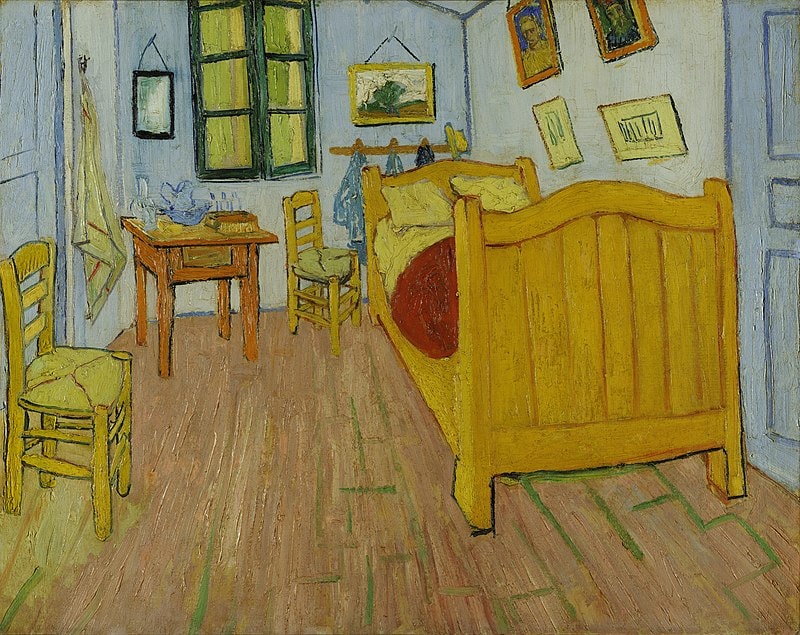
- Artist: Vincent van Gogh
- Era: Post-Impressionism (1888)
- Cultural Context: Painted during Van Gogh’s time in Arles, reflecting his longing for stability and peace.
- Theme: A simple depiction of Van Gogh’s bedroom, infused with personal meaning.
- Key Figures: The room’s furnishings, including the bed, chairs, and paintings on the wall.
- Techniques: Vibrant, flat colours and exaggerated perspective.
- Symbolism: Represents Van Gogh’s quest for solace and simplicity.
- Significance: A deeply personal work cherished for its intimacy and emotional resonance.
44. Christ of Saint John of the Cross by Salvador Dalí
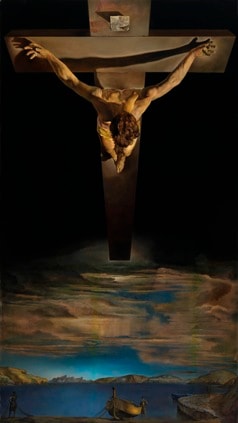
- Artist: Salvador Dalí
- Era: Surrealism/Religious Art (1951)
- Cultural Context: Inspired by a sketch by Saint John of the Cross and Dalí’s own spiritual awakening.
- Theme: A striking depiction of Christ on the cross, viewed from an unusual perspective above.
- Key Figures: Christ, suspended over a tranquil sea and boat, with no visible wounds.
- Techniques: Hyper-realistic details and dramatic foreshortening to emphasise perspective.
- Symbolism: Represents divine transcendence and the unity of heaven and earth.
- Significance: A deeply spiritual work, blending Dalí’s surrealist style with profound religious themes, celebrated for its originality.
45. Liberty Leading the People by Eugène Delacroix
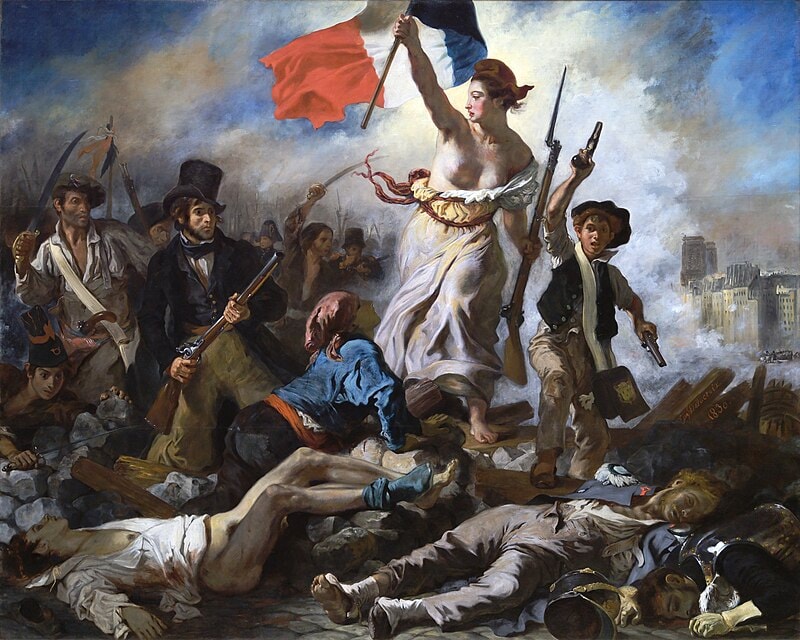
- Artist: Eugène Delacroix
- Era: Romanticism (1830)
- Cultural Context: Created to commemorate the July Revolution of 1830 in France.
- Theme: Liberty personified as a woman leading revolutionaries to freedom.
- Key Figures: Liberty (Marianne), holding the tricolour flag and a musket, flanked by various figures symbolising unity and rebellion.
- Techniques: Dynamic composition, vibrant colours, and emotive brushstrokes.
- Symbolism: This painting represents freedom, sacrifice, and the spirit of revolution.
- Significance: A quintessential Romantic painting and a symbol of French national pride. It is often connected with the ideals of liberty and democracy.
Conclusion
Each famous painting has its own piece of background story that reflects the character and life of the artist. Their legacy and artworks is a strong testament and influence to what the modern art society is today, and how aspiring modern artists are now being true to themselves.
Oil paintings are priceless and timeless treasures that captures the audiences attention by giving them a glimpes of what human emotion is as well as the cultural history of the world.
If this list has sparked your interest, explore canvas art and its rich legacy at MintSuper Art


